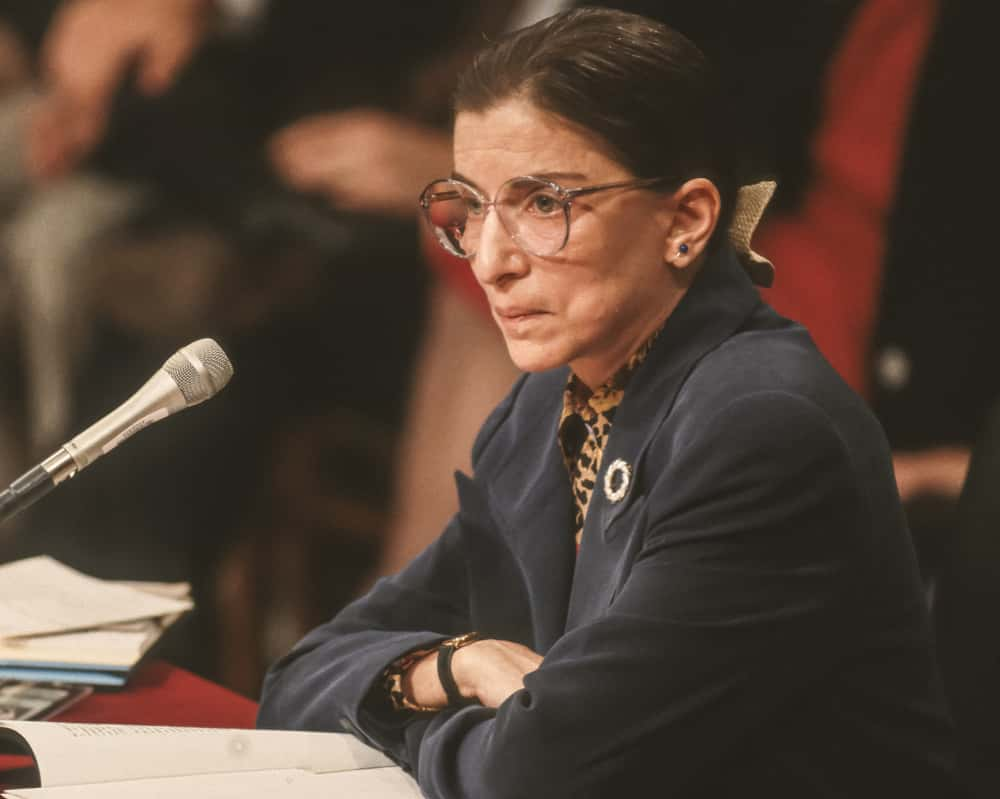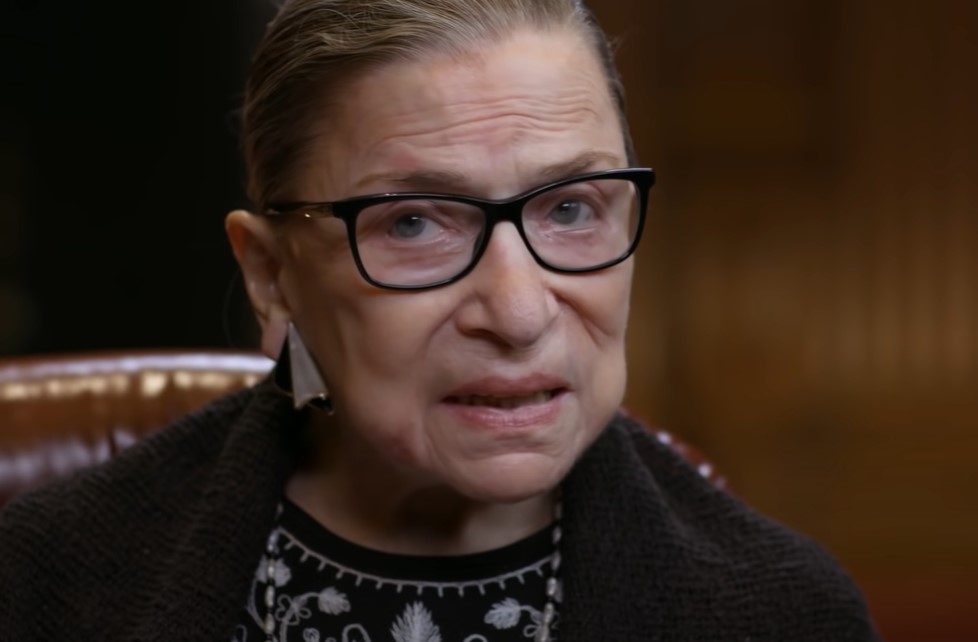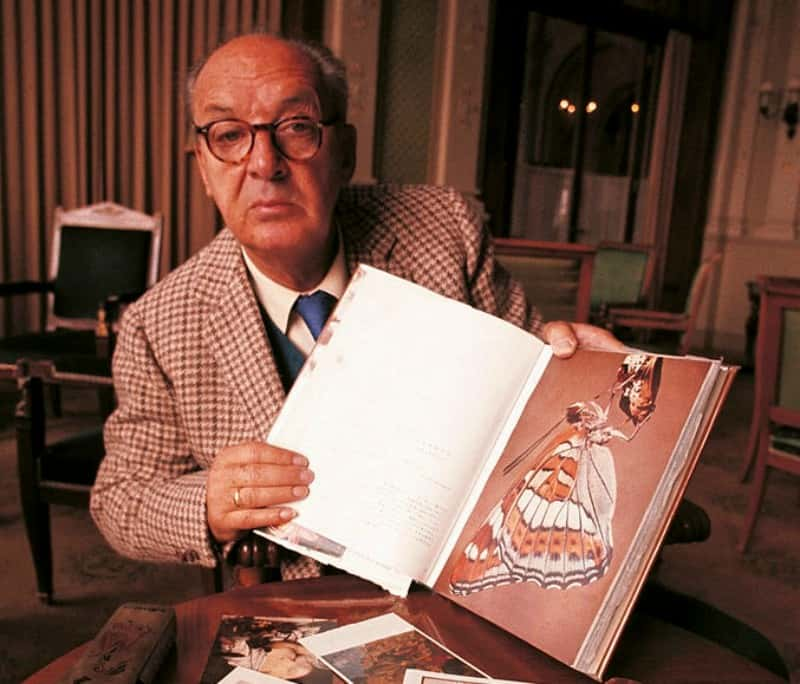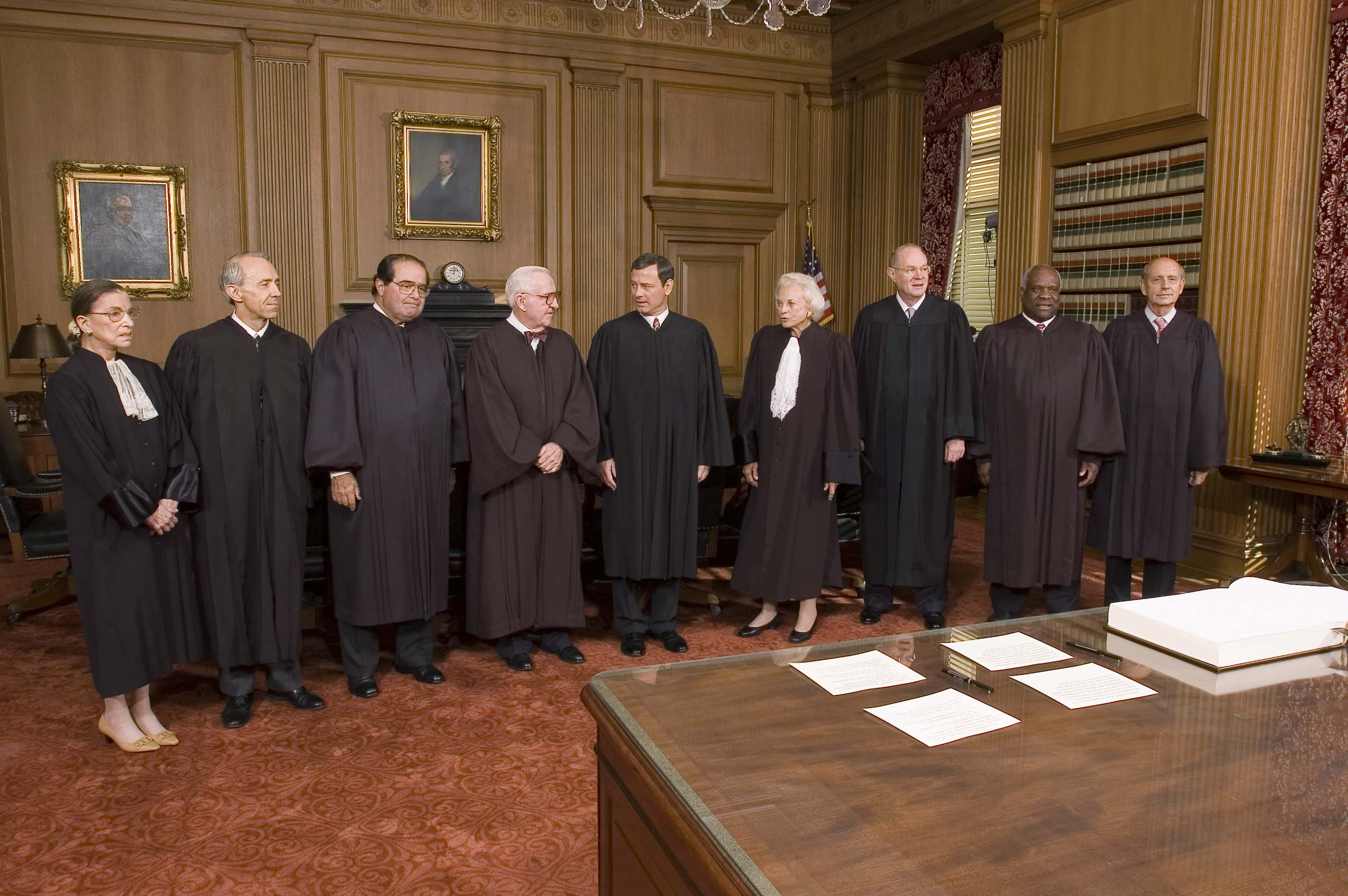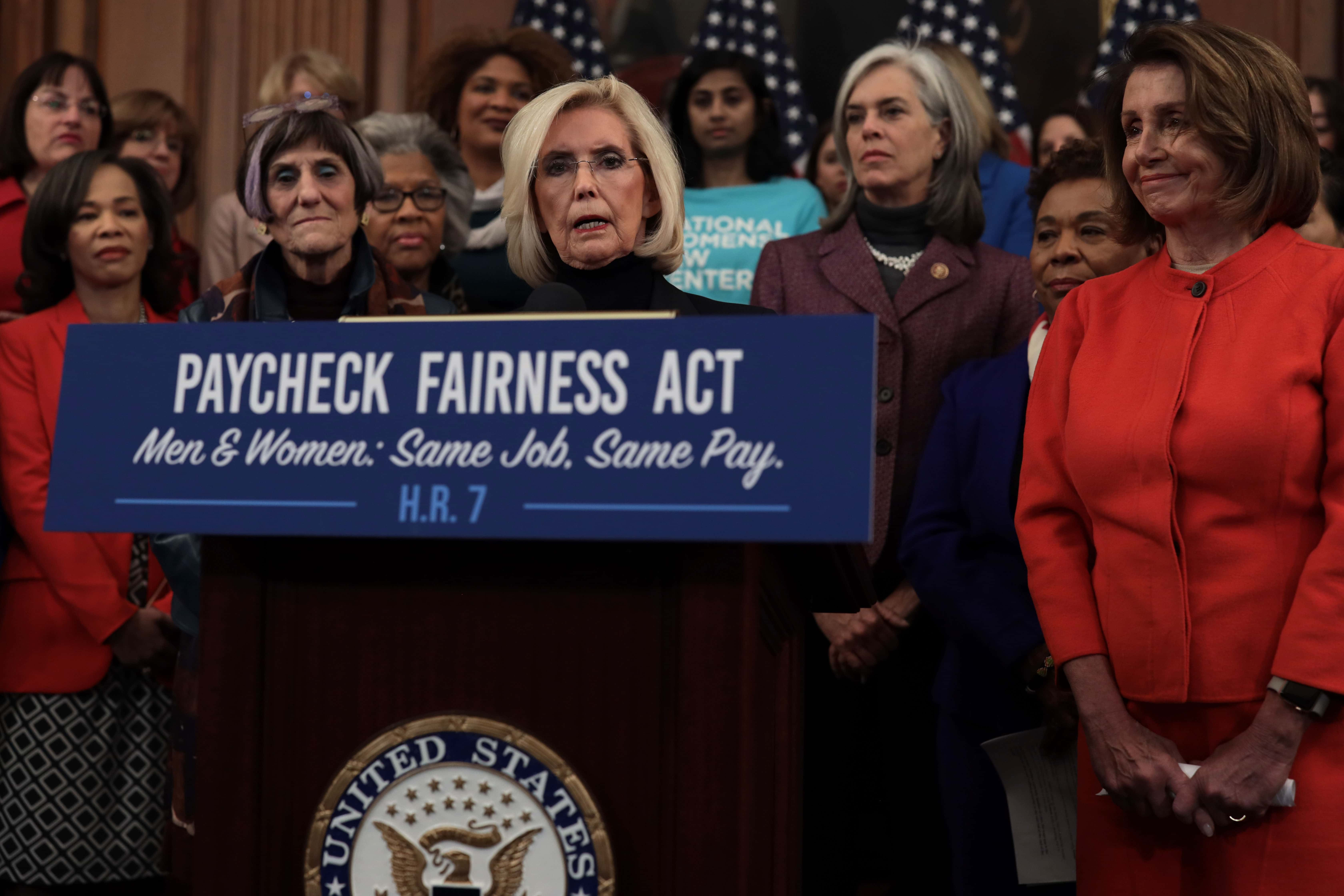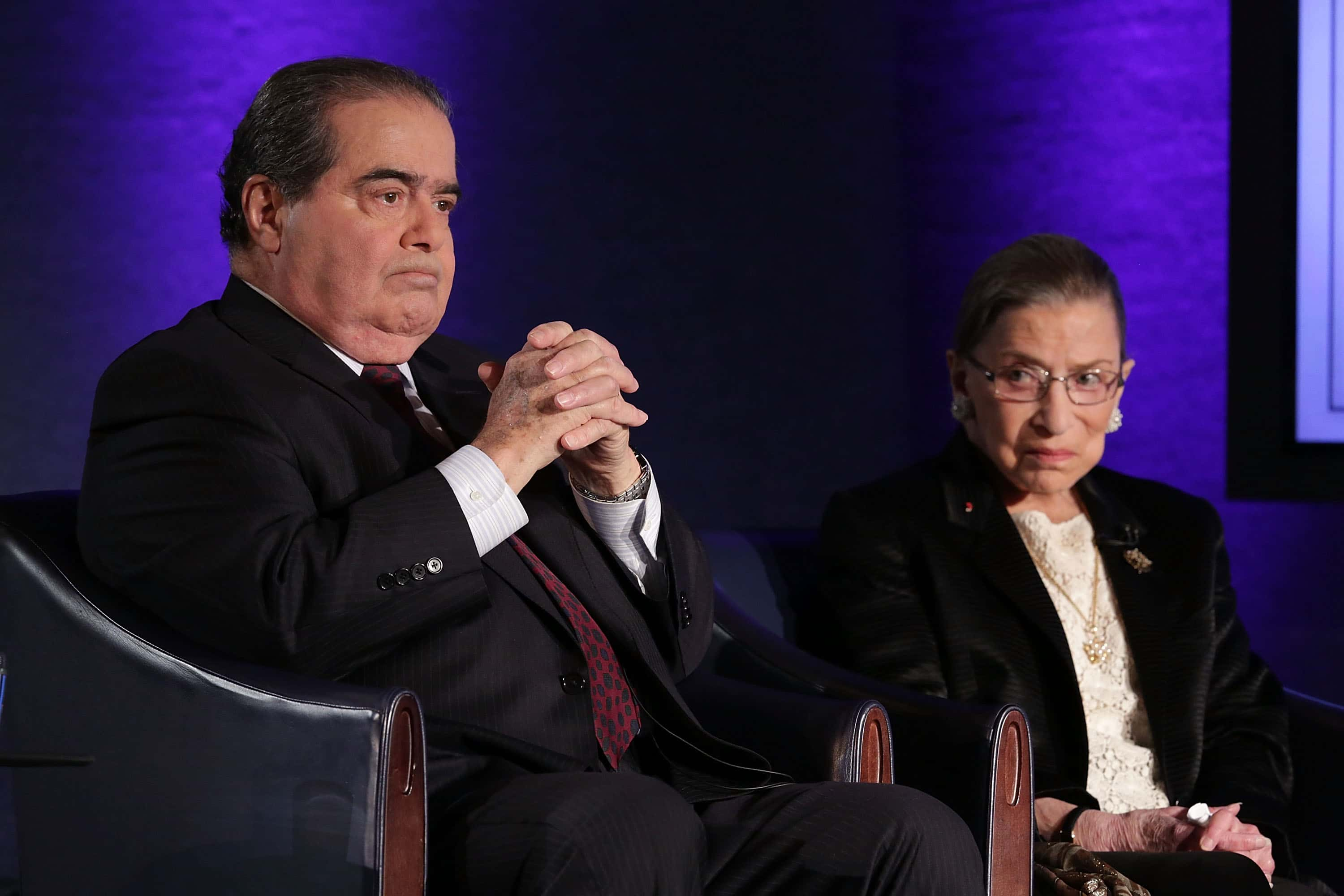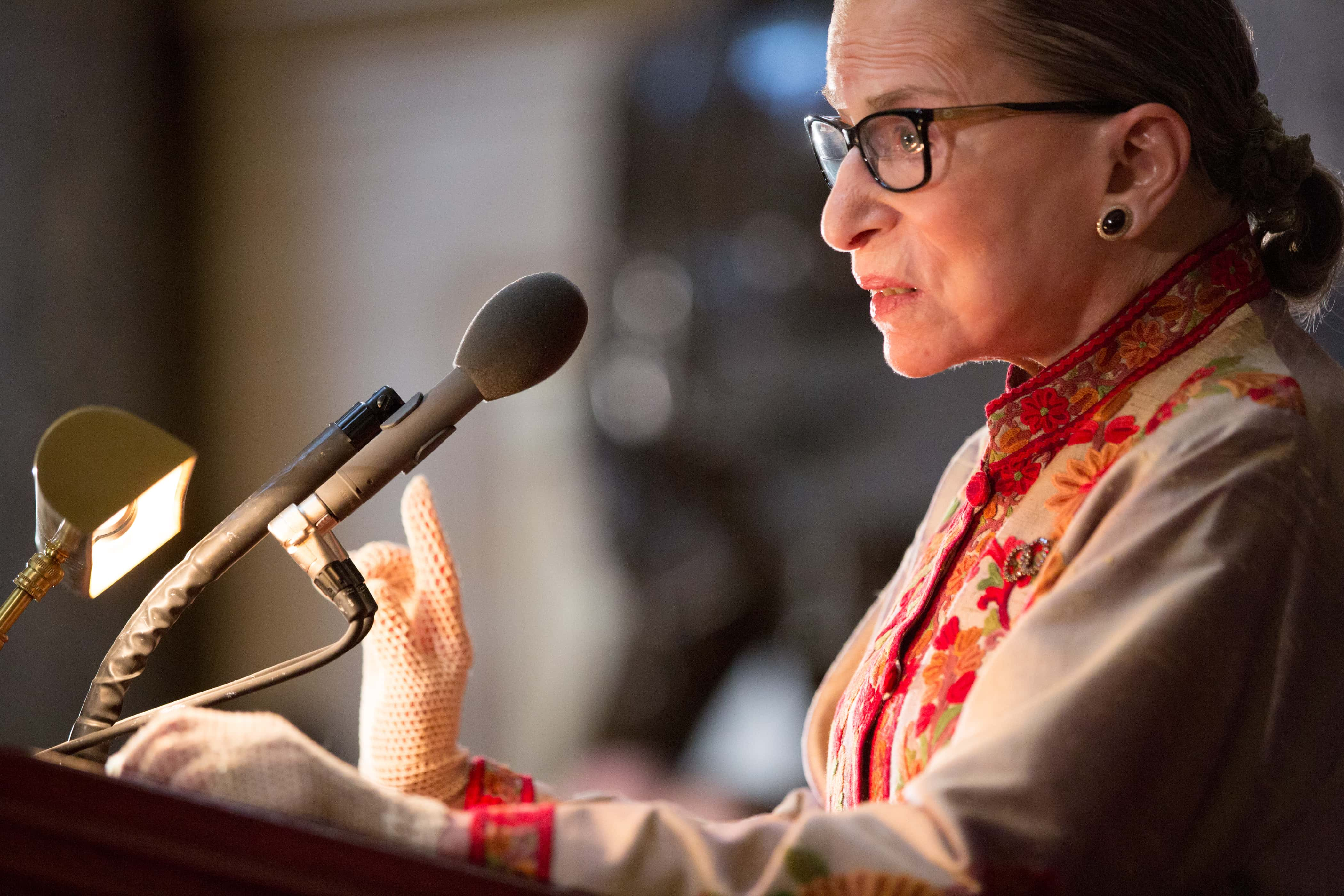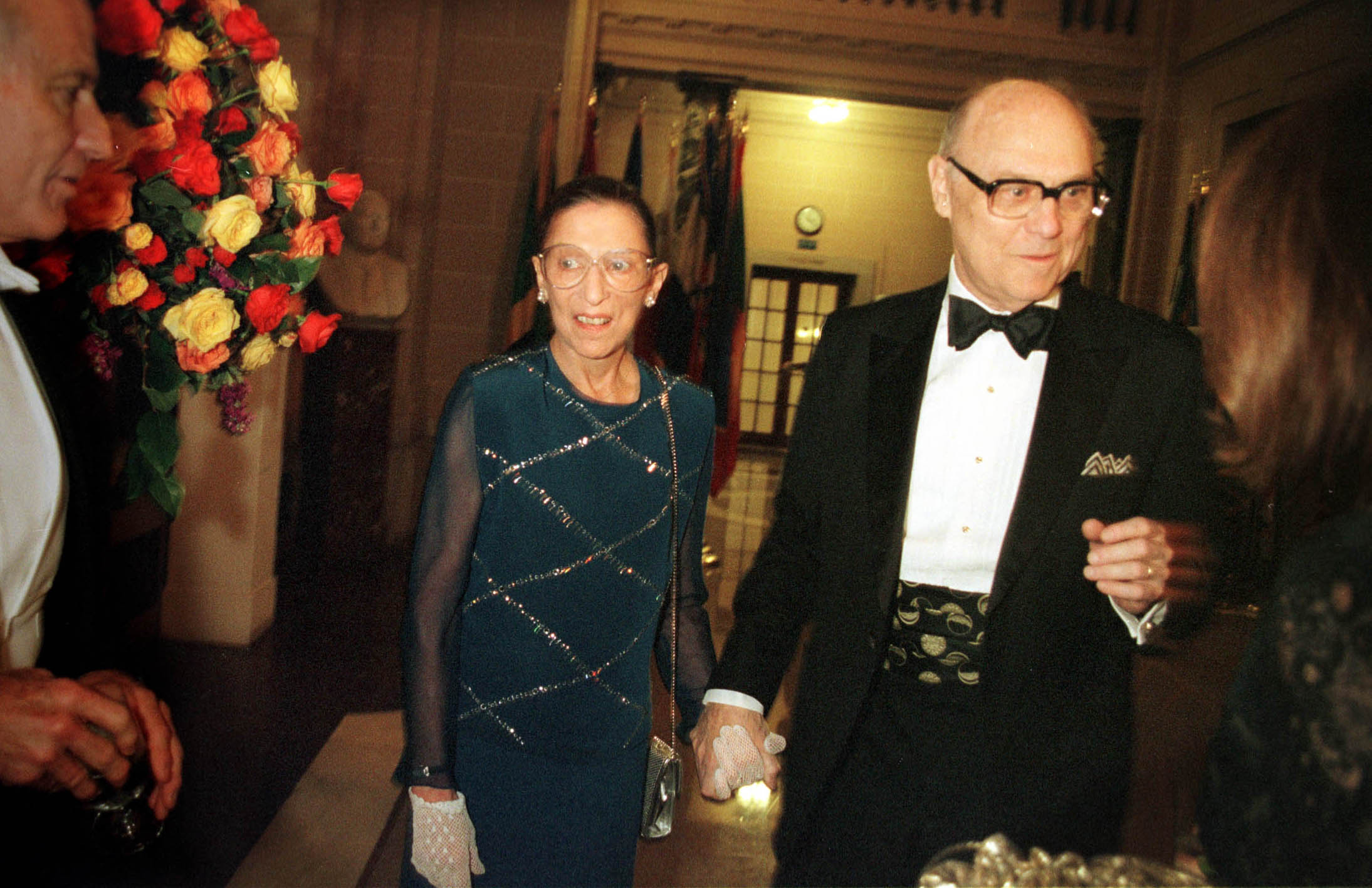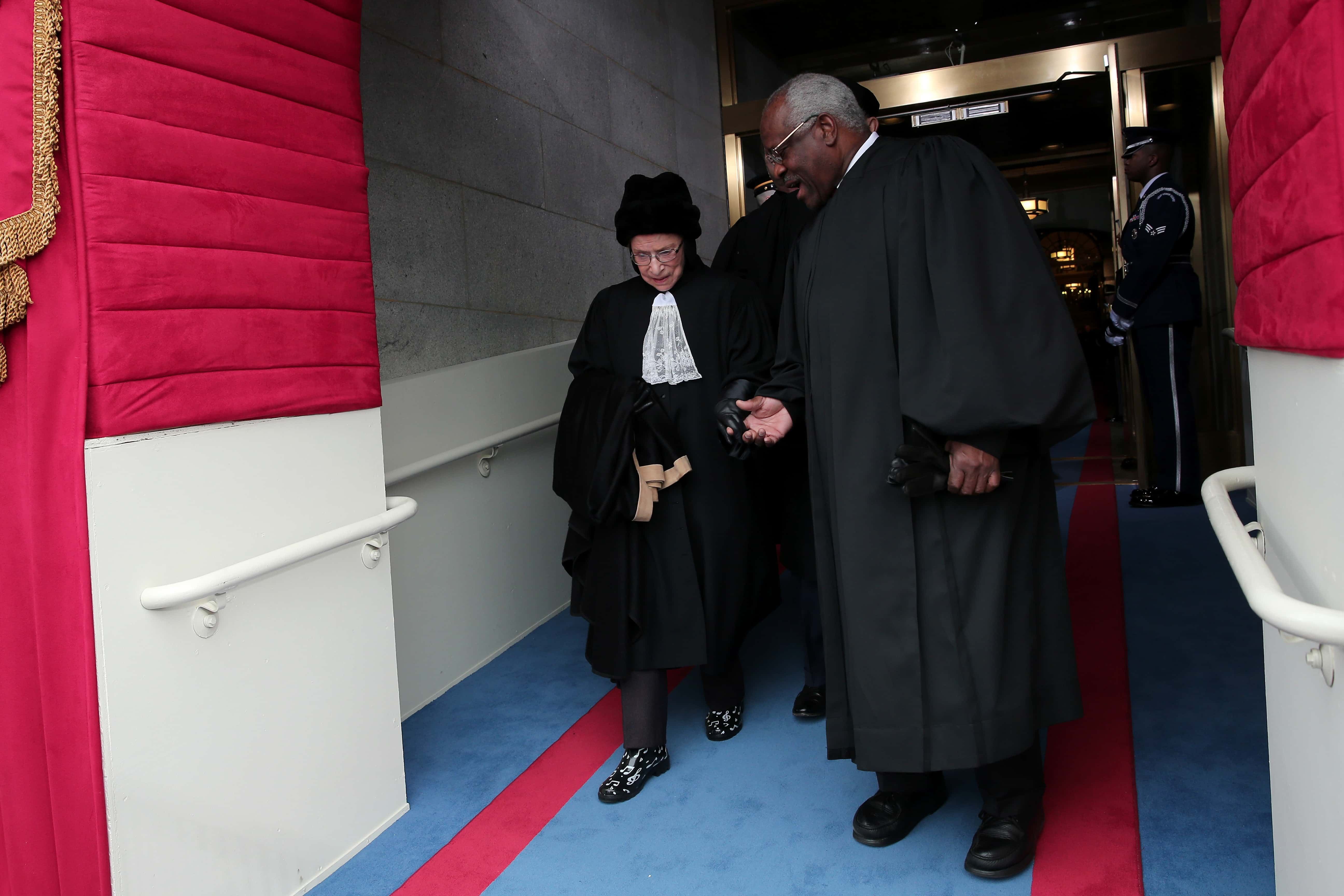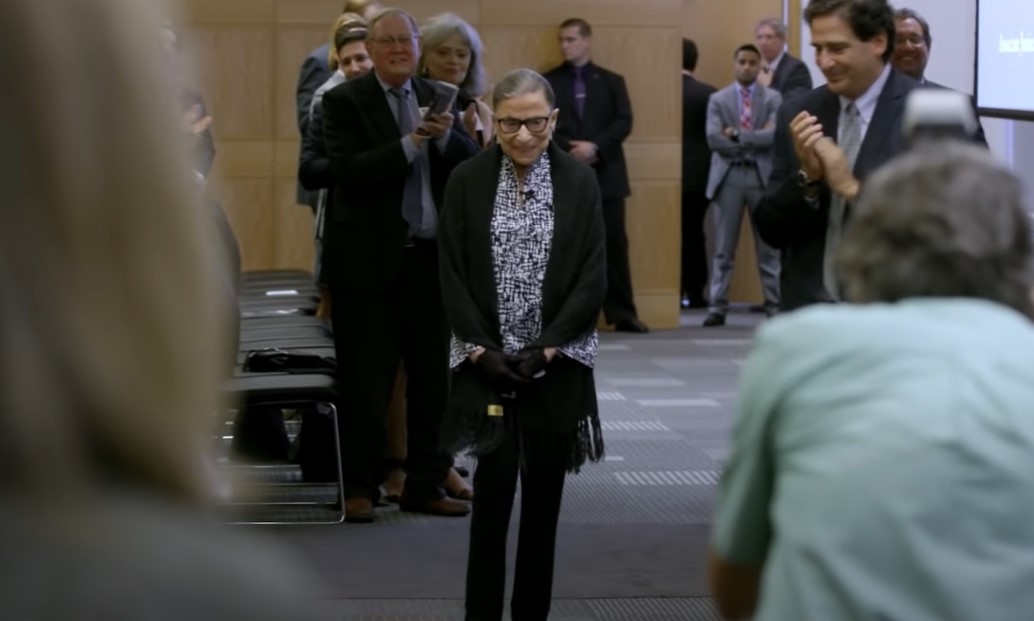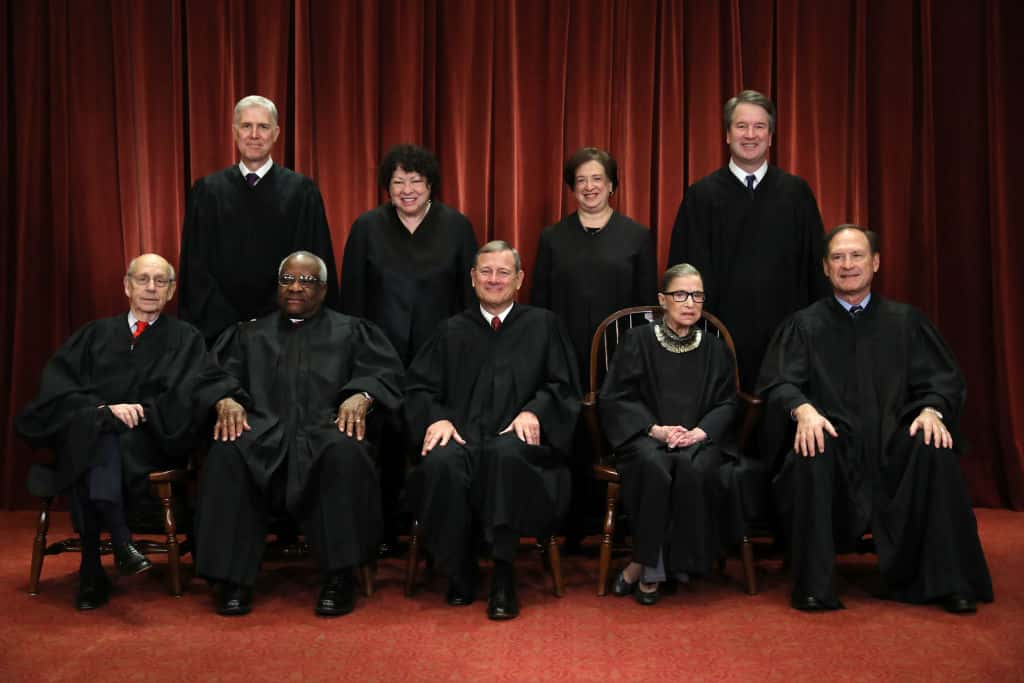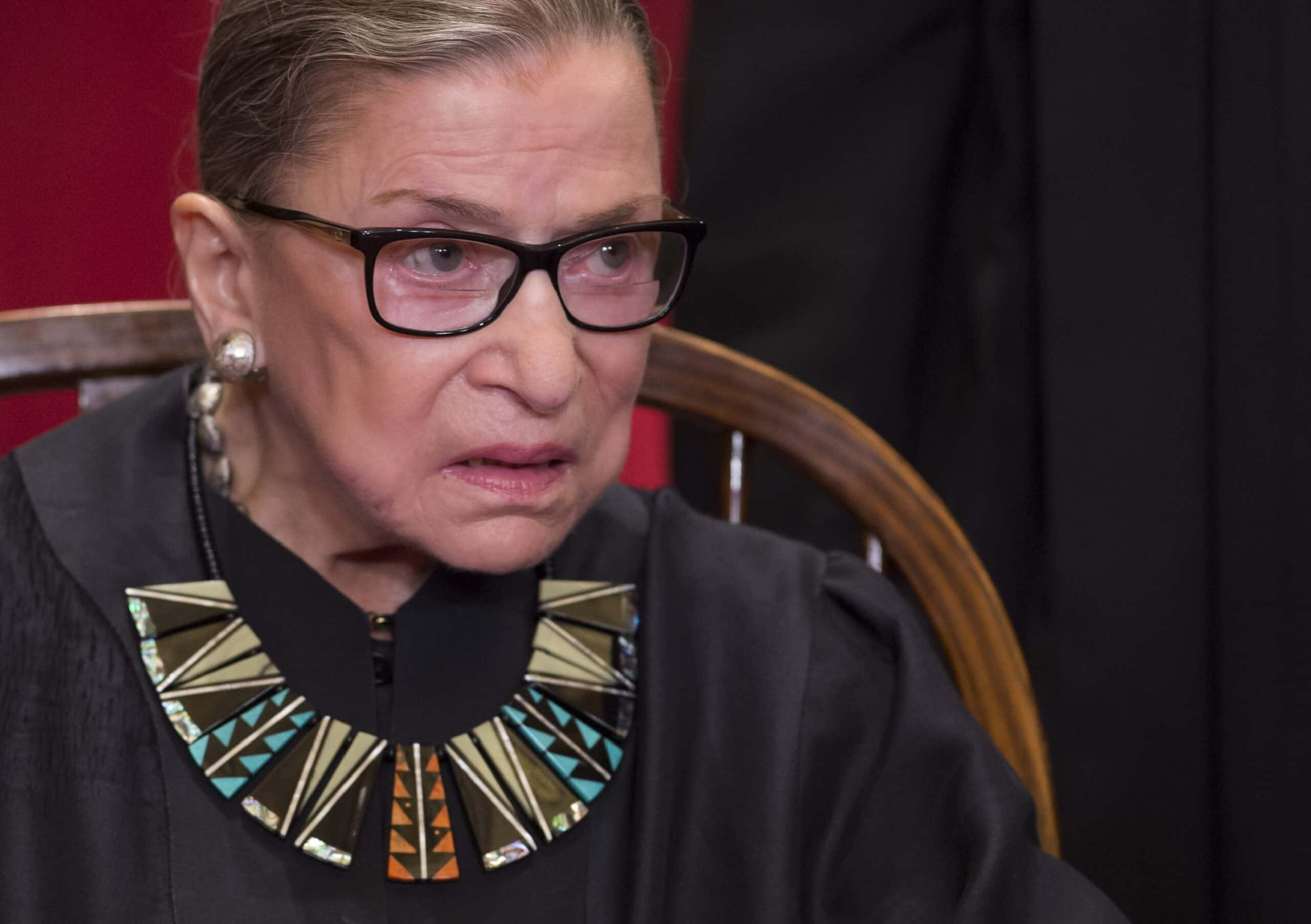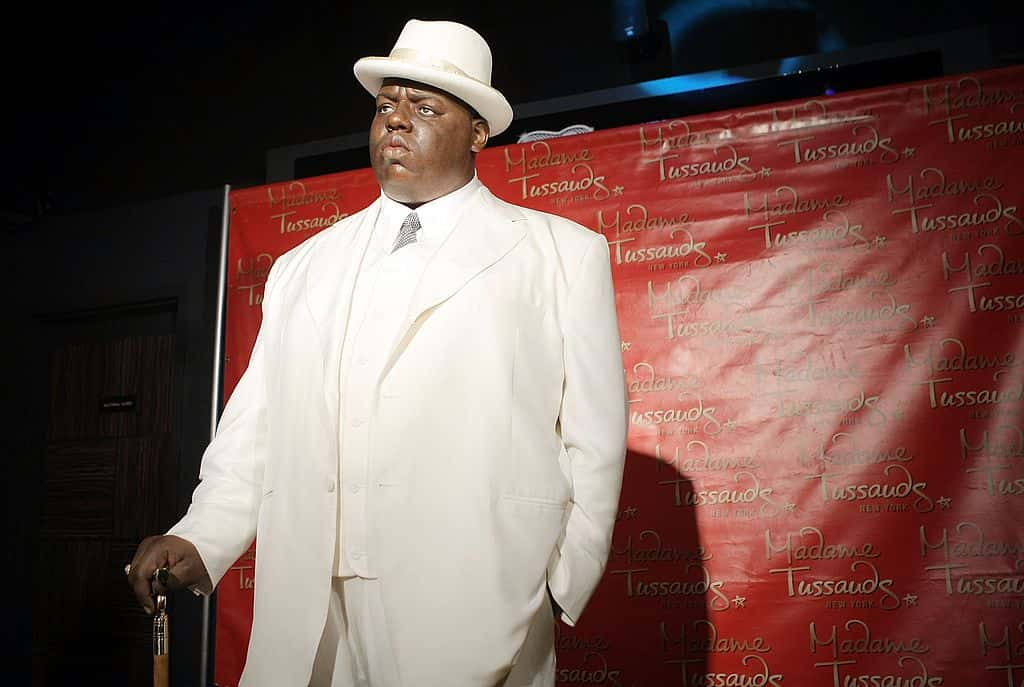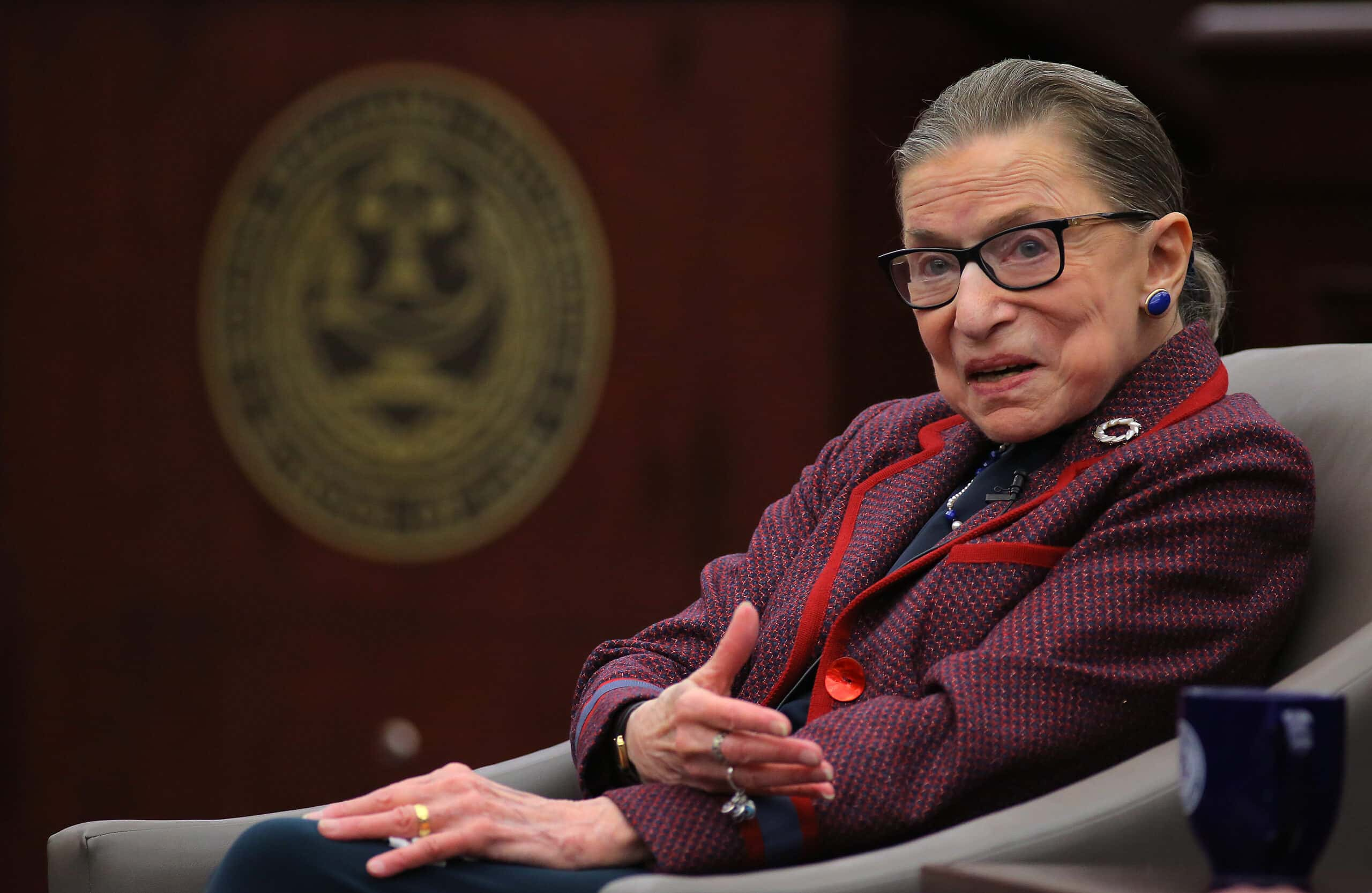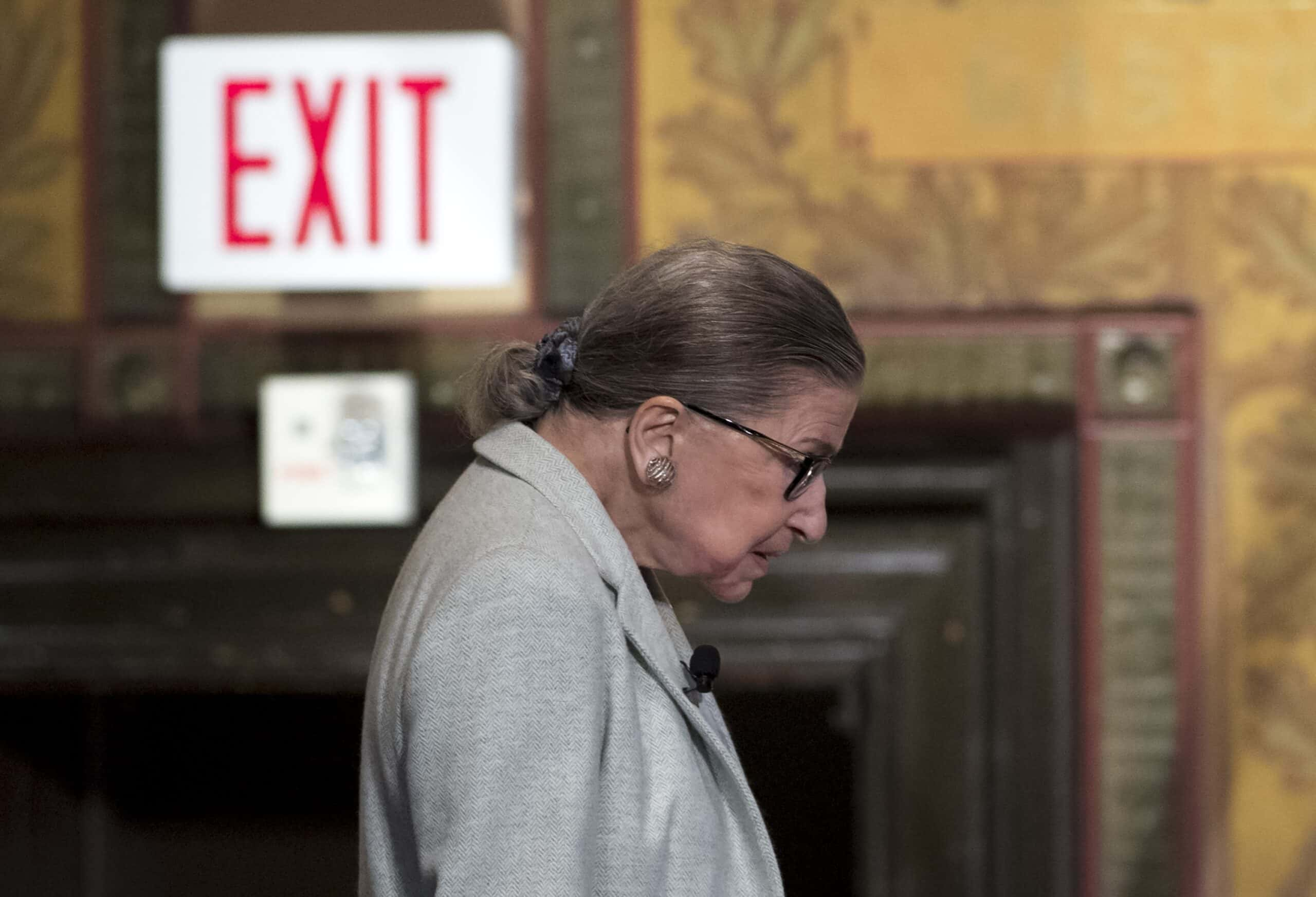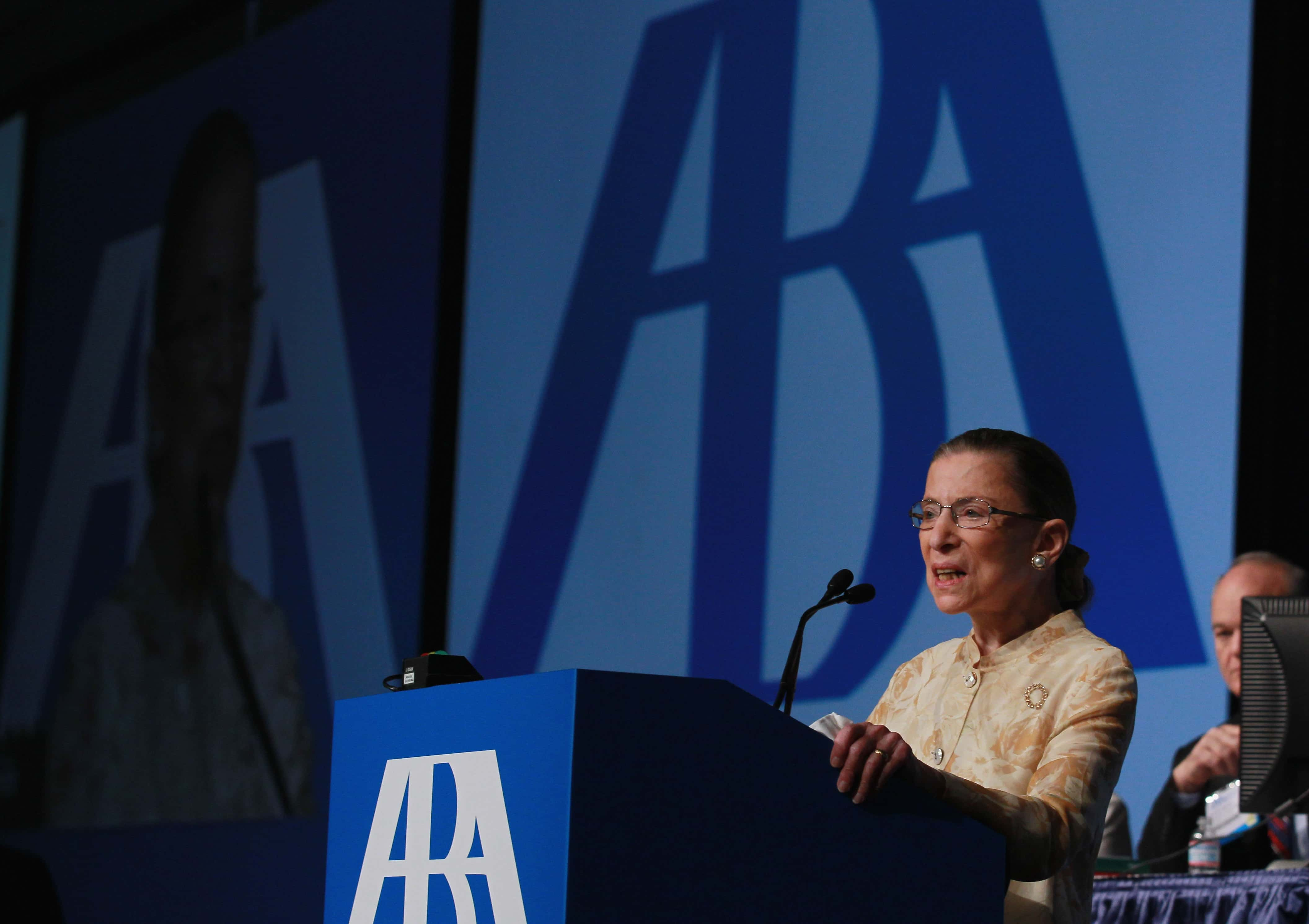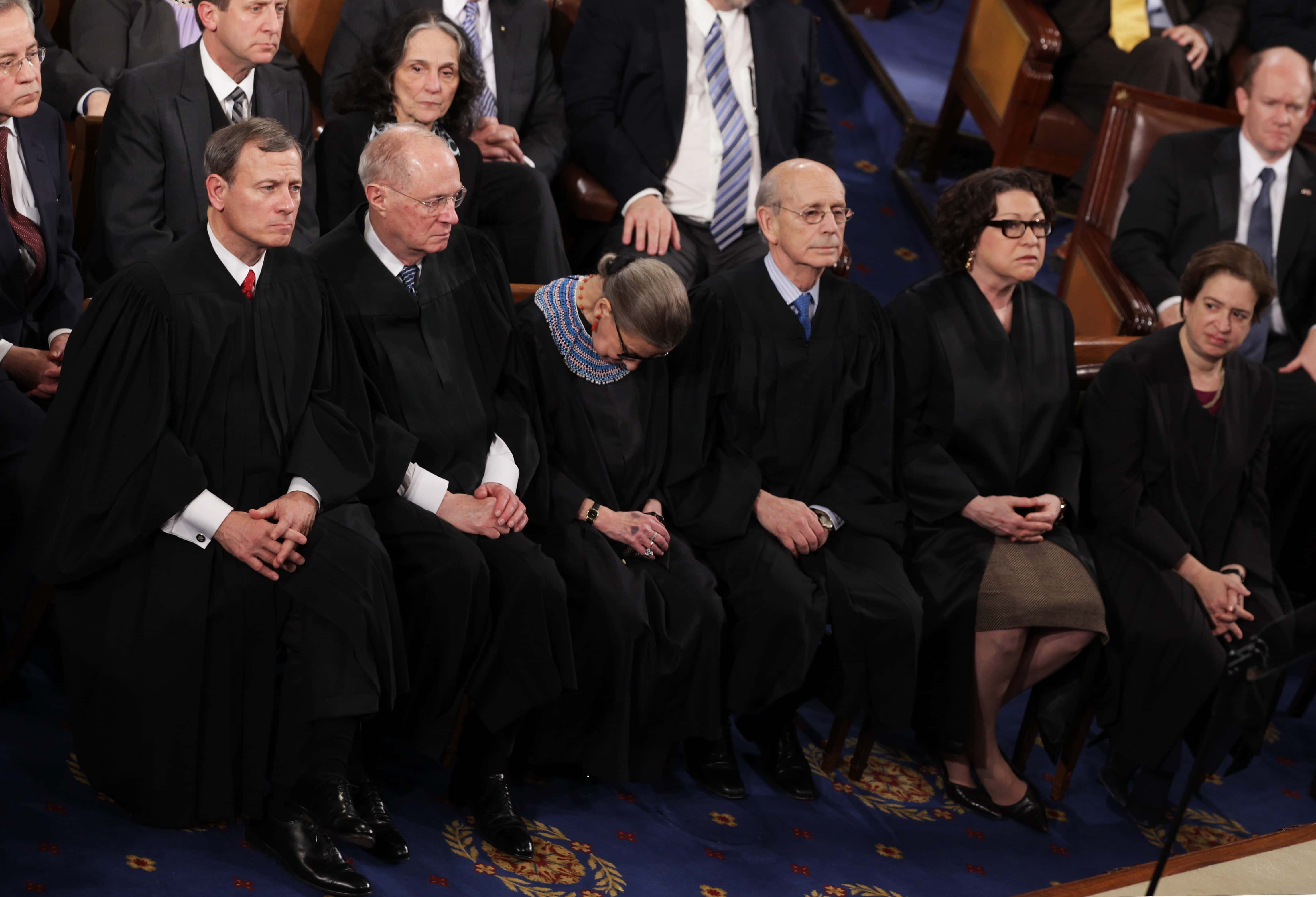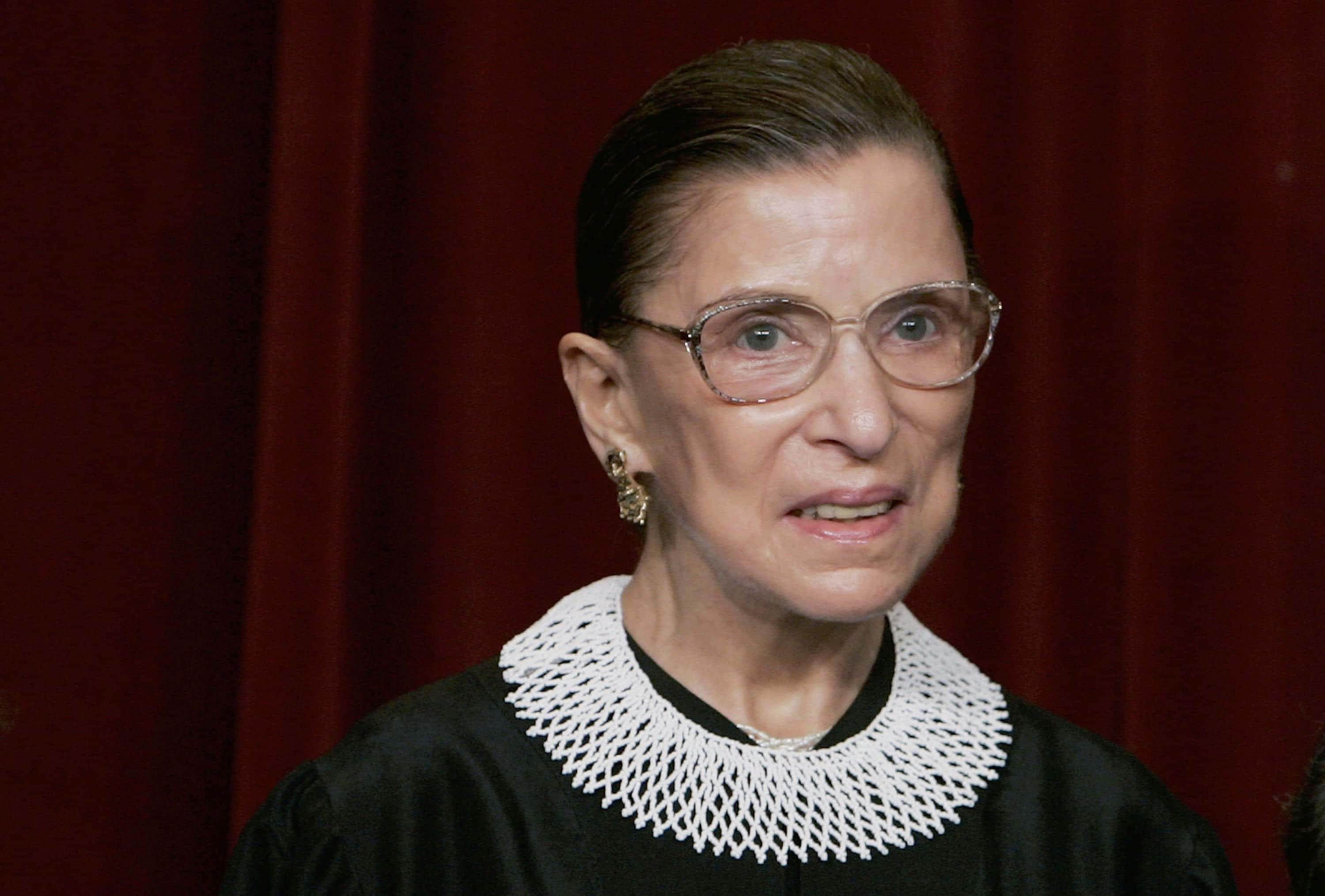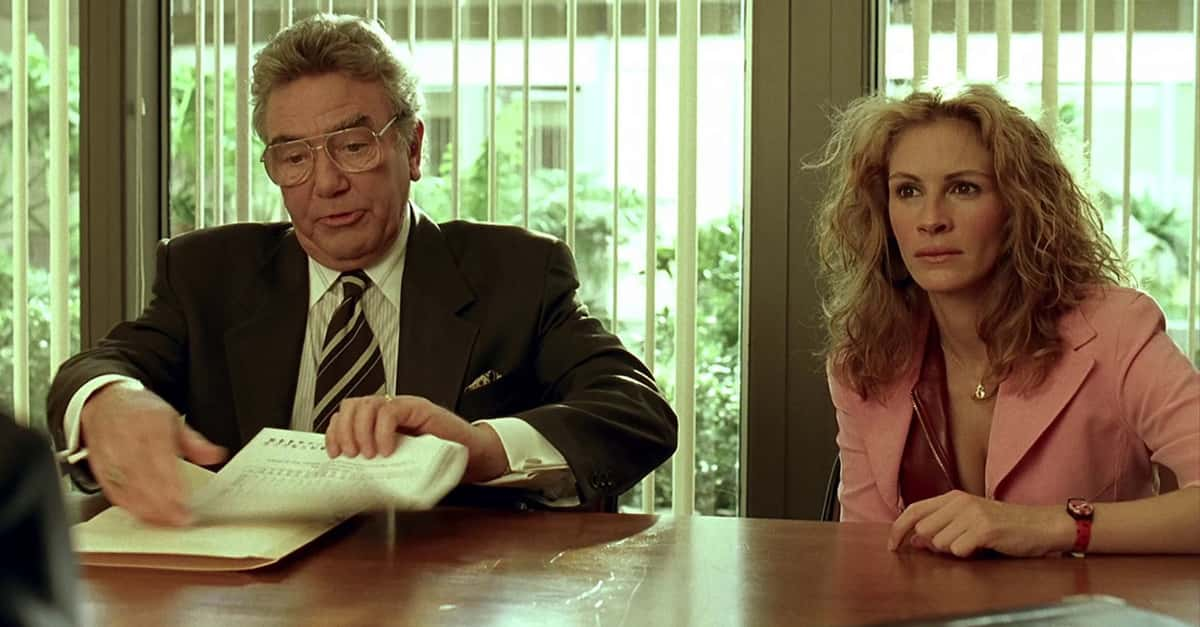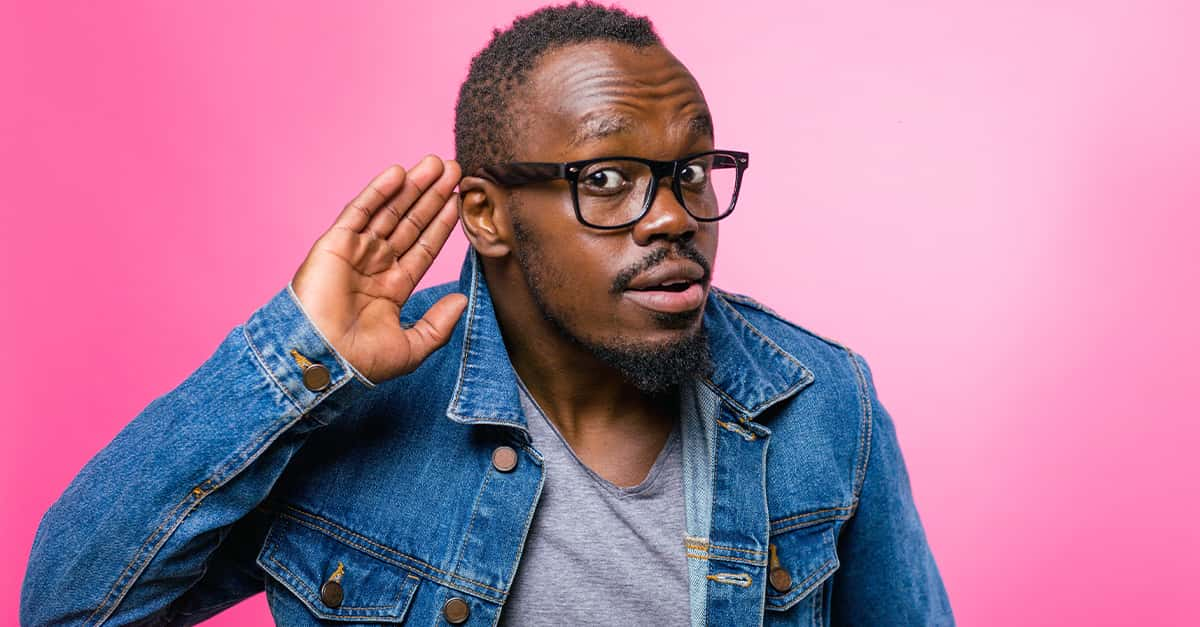Ruth Bader Ginsburg passed on September 18, 2020, and the world lost a legend. But how did this 5'1" Jewish girl from Brooklyn rise to the highest court in America? Who really was the Notorious RBG? There was so much more to this icon than most people realize. Dive into her remarkable life and find out for yourself.
Ruth Bader Ginsburg Facts
1. She Was Joan First
Before Ruth, there was Joan. Born Joan Ruth Bader on March 15, 1933 in Brooklyn, her father Nathan was a first-generation immigrant from Odessa (in modern-day Ukraine) and her mother Celia was a born and bred New Yorker from Polish immigrant parents. Tragically, the young Bader family could only celebrate the birth of their baby girl for 14 months before they faced a sudden, heartbreaking loss.
2. Her Family Suffered Tragedy
Little Joan was not the Baders' first child. Nathan and Celia welcomed another girl, Marylin, five years earlier. She passed after a sudden bout of meningitis at six, when Ruth was just over a year old. Her parents would not have any more children, so from then on, Ginsburg was an only child—but she still managed to keep her parents plenty busy.
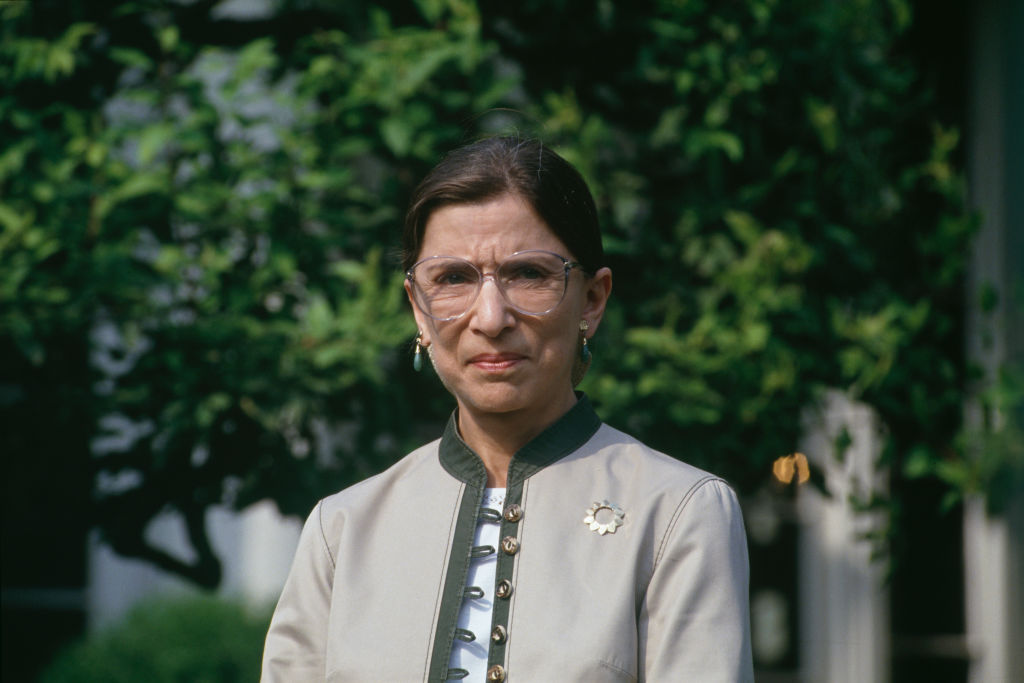 Jeffrey Markowitz, Getty Images
Jeffrey Markowitz, Getty Images
3. She Became Kiki Next
After "Joan," Ginsburg became "Kiki," so named because as a baby, she would never stop kicking. She was determined to raise a ruckus since before she could walk. As you can imagine, when this toddler started growing up, she became even more of a handful.
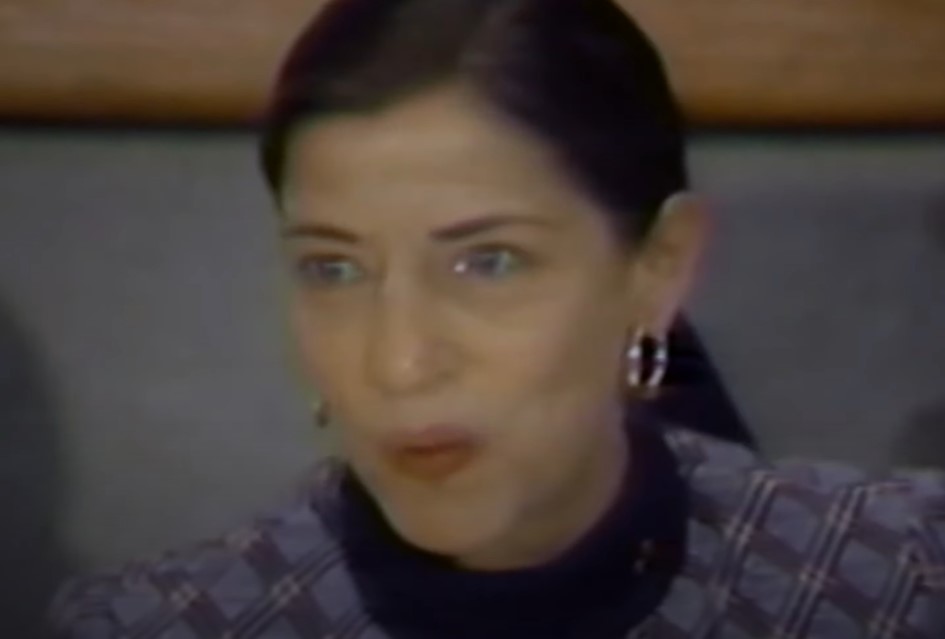 American Film Foundation, RUTH - Justice Ginsburg in her own Words (2019)
American Film Foundation, RUTH - Justice Ginsburg in her own Words (2019)
4. She Knew How To Stand Up For Herself
Anyone could see that little Kiki Bader was special from the very beginning. She practiced the piano tirelessly and she read voraciously—but just because she devoted so much time to her studies doesn't mean she didn't manage to get into trouble now and again. Her parents sometimes caught her climbing on the roof of their garage, or maybe throwing rocks at mean kids from the neighborhood.
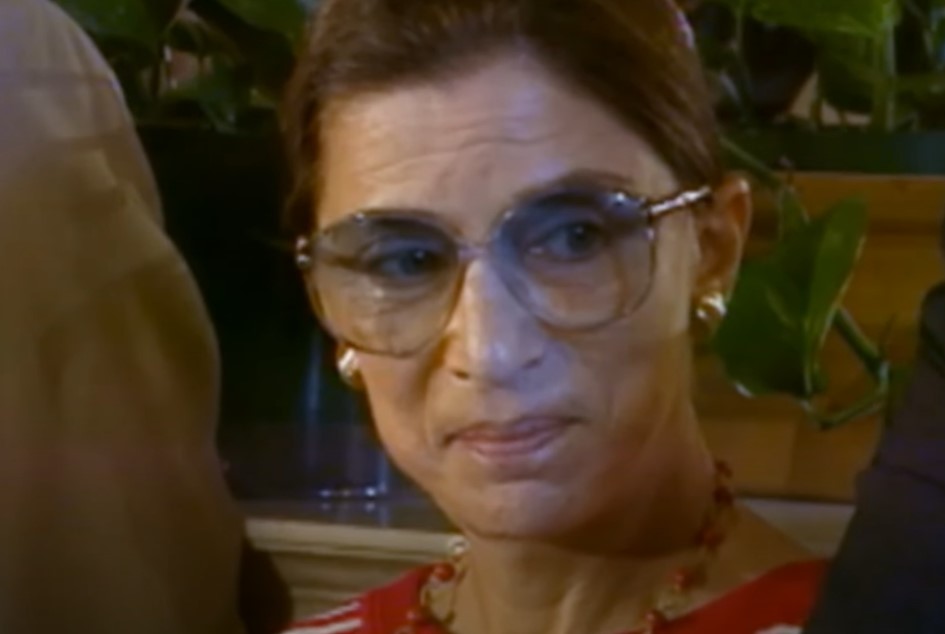 American Film Foundation, RUTH - Justice Ginsburg in her own Words (2019)
American Film Foundation, RUTH - Justice Ginsburg in her own Words (2019)
5. She Became Ruth At School
First Joan, then Kiki, when do we finally get to meet Ruth? That day would come when Ginsburg started school and her mother learned that there were several Joans in her daughter's class. Celia suggested that she go by her middle name, and Ruth Bader was born. But her nicknames aren't the only things her mother gave her.
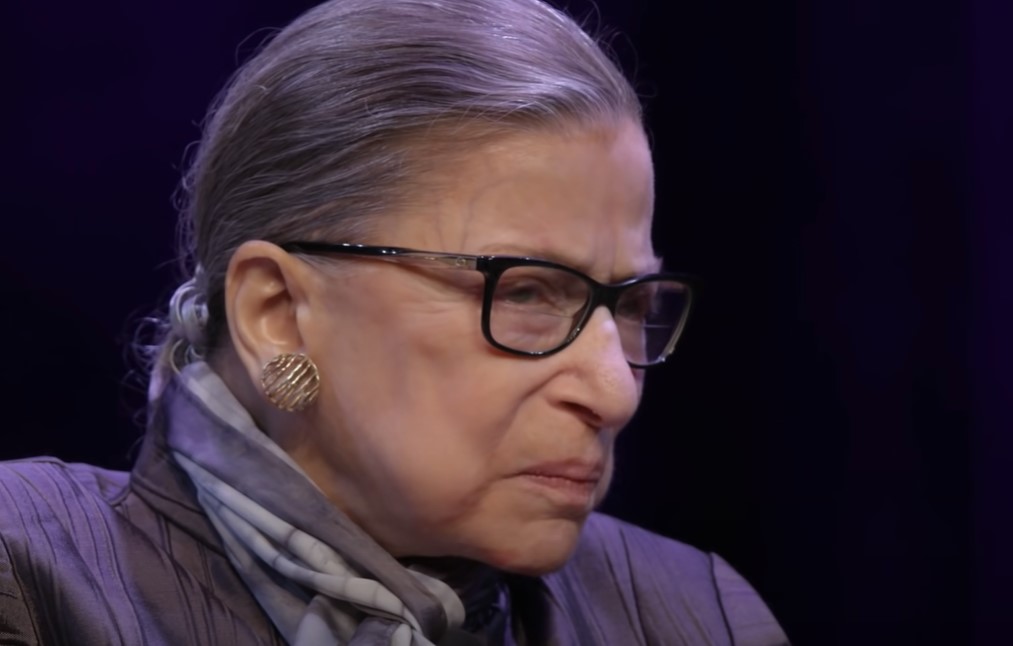 American Film Foundation, RUTH - Justice Ginsburg in her own Words (2019)
American Film Foundation, RUTH - Justice Ginsburg in her own Words (2019)
6. Her Mother Was An Amazing Woman
Unfortunately, if things were tough for women during Ginsburg's life, it was even worse for her mother. A brilliant student, Celia's family could only afford to send one child to college, so of course, times being what they were, they sent her brother. A lot of sisters would have been resentful, but Celia's response was remarkable.
7. Her Mother Sacrificed Her Education
Celia actually took a job working in a garment factory to help her family pay for her brother to go to college. You couldn't ask for a better role model than Celia Bader, and Ruth took her mother's lessons to heart. Celia wanted her daughter to get the education she never could, and she pushed Ruth to excel in school. For the rest of her life, Ruth Bader Ginsburg would cite her mother as her greatest inspiration.
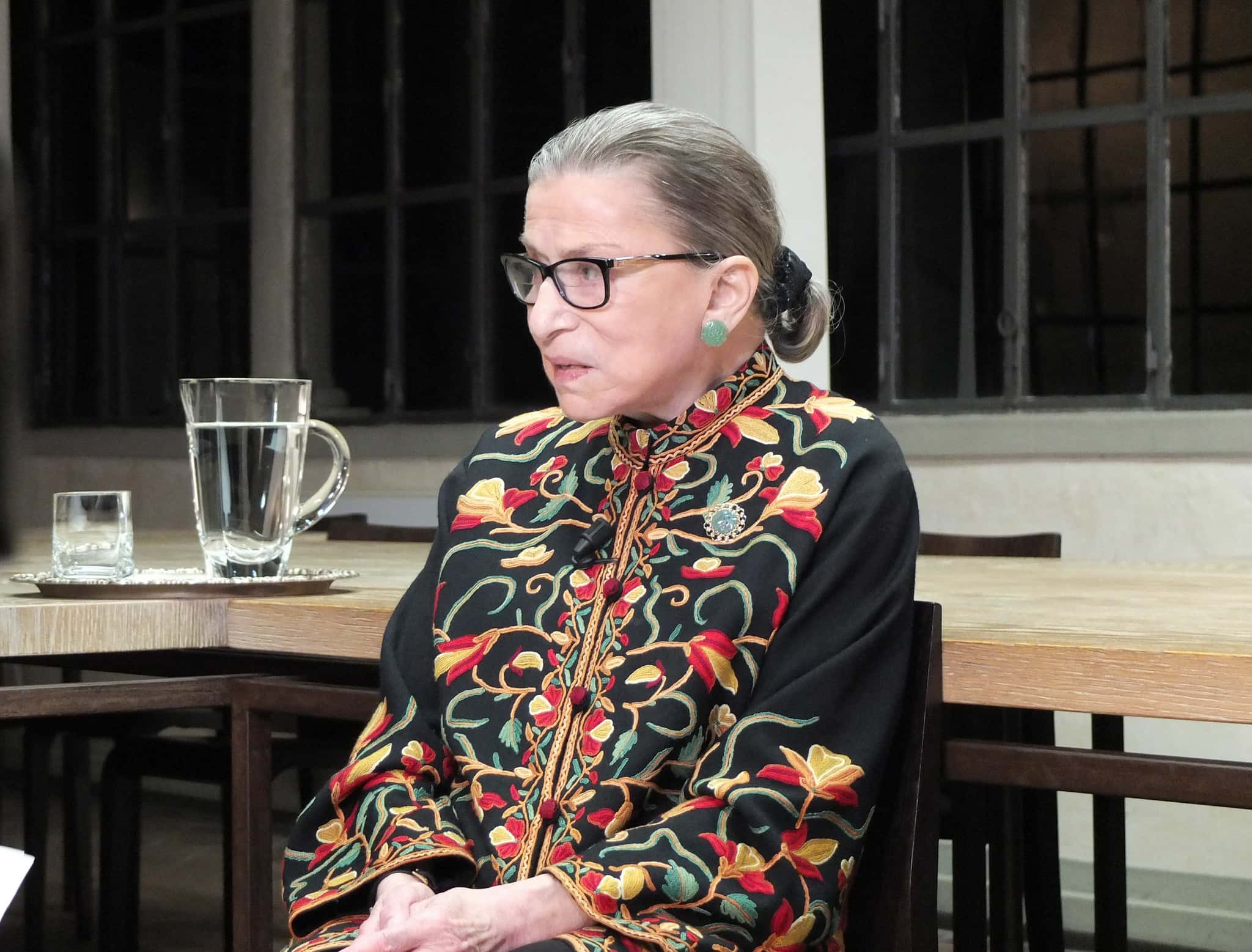 European University Institute, Flickr
European University Institute, Flickr
8. She Met Her Love At Cornell
Ruth Bader did her mother proud by getting to do what she never did: Straight out of high school, she enrolled at Cornell University. There, she met the love of her life: A young man by the name of Martin Ginsburg. Years later, Ruth would say that her husband was "the only young man I dated who cared that I had a brain." He was gregarious, silly, and loved to entertain people—a perfect foil to the shy and hardworking Ruth.
Martin and Ruth Bader Ginsburg remained by each other's side for the rest of their lives, despite the enormous hardships that were heading their way.
 Indies1, CC BY-SA 4.0, Wikimedia Commons
Indies1, CC BY-SA 4.0, Wikimedia Commons
9. She Had A Famous Professor
University was a constant battle for the diminutive Ginsburg to assert herself, but there were some bright spots. Throughout her career, even Ginsburg's critics had to admit that she had a special way with words. She credits this, in part, to one of her professors at Cornell: Legendary novelist Vladimir Nabokov. But eventually, university had to end—and there was a brutal world out there waiting for her.
10. She Lost A Job Because She Was Pregnant
Ginsburg faced blatant sexism from the moment she entered the workforce. After the newlyweds moved to Oklahoma, she took a job at the Social Security Administration. But, before she'd even gotten started, she found herself demoted. Why? She mentioned that she was pregnant to another employee. The SSA figured a pregnant woman wouldn't be able to do her job nearly as well, so they demoted her and cut her pay.
And that was the last time Ginsburg ever had to deal with discrimination, right? Haha...no.
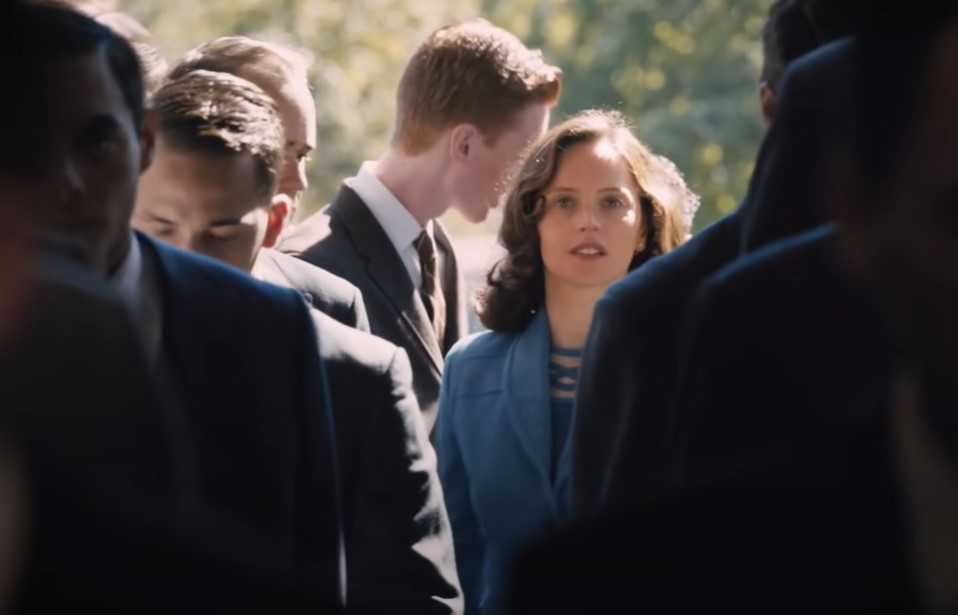 DreamWorks, On the Basis of Sex (2018)
DreamWorks, On the Basis of Sex (2018)
11. She Wasn't Going To Let It Happen Again
Ginsburg had to face a humiliating and completely unwarranted demotion the first time she was pregnant—but she was never going to let that happen to her again. When she became pregnant a second time, she did everything she could to conceal that she was expecting for as long as possible. But of course, this was just one small battle in the face of hundreds. Ginsburg's career was not about to get any easier.
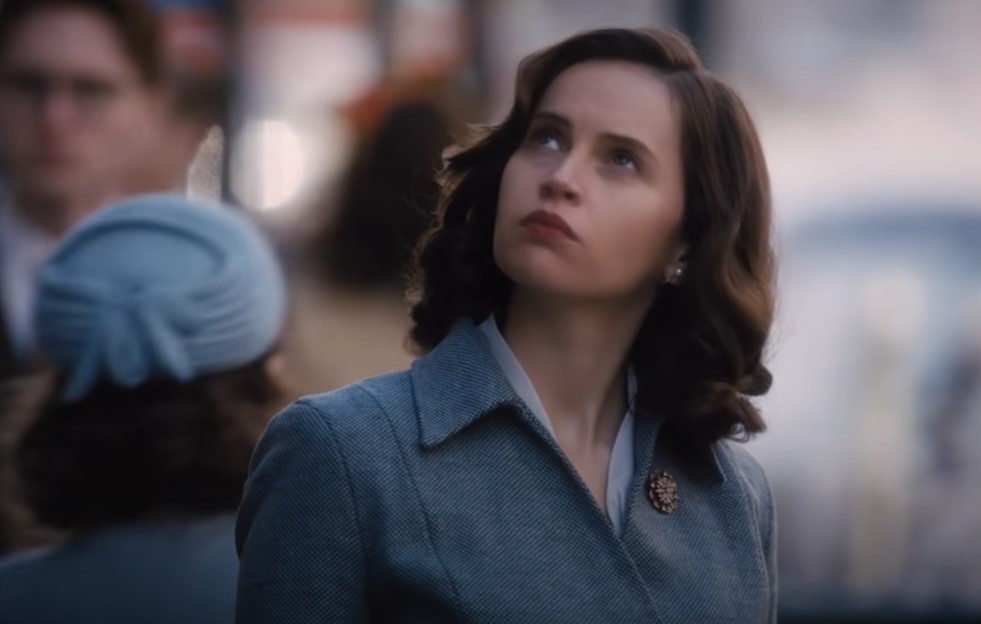 DreamWorks, On the Basis of Sex (2018)
DreamWorks, On the Basis of Sex (2018)
12. Her Husband Was The Domestic One
Ruth and Martin spent over 50 happy years together. Martin gave a simple answer when asked how they made it work: "My wife doesn't give me any advice about cooking and I don't give her any advice about the law." In a reversal of roles that's almost too perfect, Martin was an amazing chef, and any of Ginsburg's law clerks could expect a homemade cake from him on their birthdays.
13. She Started Making A Name For Herself
After beginning law school at Harvard (one of only nine women in a class of over 500), Martin took a job in Ginsburg's hometown, so she transferred to Columbia. The switch allowed Ginsburg to earn one of the countless "firsts" in her life. She was the first woman ever to be on two major law reviews: the Harvard Law Review and Columbia Law Review.
She eventually graduated first (there's another first!) in her class—but she quickly realized the world outside university was stacked against her.
 Beyond My Ken, CC BY-SA 4.0 , Wikimedia Commons
Beyond My Ken, CC BY-SA 4.0 , Wikimedia Commons
14. No One Would Hire Her
Upon graduation, Ginsburg had everything she needed to start a luminary career in law. She was the top student in her class, and she had glowing recommendations from several of her professors. She was a shoo-in to land a job as a clerk with a Supreme Court Justice...but they all turned her down because of her gender. Ginsburg ended up taking a job she was completely overqualified for—and even that took desperate measures.
 DreamWorks, On the Basis of Sex (2018)
DreamWorks, On the Basis of Sex (2018)
15. Her Professor Knew She Was Special
On the recommendation of her Columbia professor, Gerald Gunther, Ginsburg finally landed a job. She became a law clerk for Edmund L. Palmieri, District Judge in New York. She should have been clerking for the Supreme Court, but it would do for now. Yet, even though this job was well below her abilities, Palmieri still didn't want to hire her.
He only relented because Gunther, who realized how brilliant Ginsburg was, said he would never recommend another student if Palmieri didn't hire her.
 DreamWorks, On the Basis of Sex (2018)
DreamWorks, On the Basis of Sex (2018)
16. She Missed Out On A Job For An Insanely Stupid Reason
One of the many men who rejected Ginsburg for work was the famous jurist Learned Hand (yes, that's his real name). So, why did this famed jurist decide that the top-of-her-class Ginsburg wasn't fit to work for him? He swore a lot, and he figured if he had a gal around, he'd have to reign in his potty mouth. Wonderful...but wait, it gets worse.
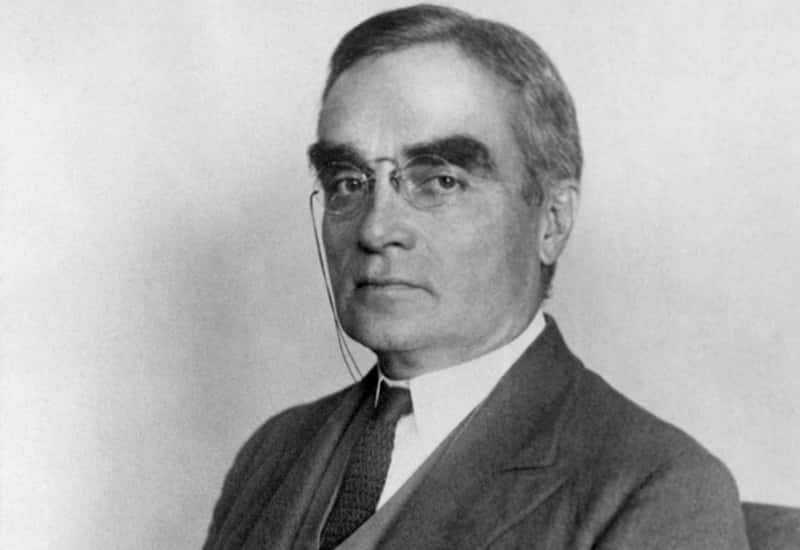 Harvard University Library, Wikimedia Commons
Harvard University Library, Wikimedia Commons
17. Men Wouldn't Even Look At Her
Not too long after Hand rejected her, Ginsburg actually found herself in a car with him and her new boss, Palmieri. To her surprise, Ginsburg sat and listened as Hand swore up a storm. Noting more than a little hypocrisy, Ginsburg spoke up and asked why he was so comfortable cursing around her, seeing as that's the exact reason he didn't hire her. Hand's response was stunning.
Without even turning his head, Hand said, "Young lady, I'm not looking at you."
 DreamWorks, On the Basis of Sex (2018)
DreamWorks, On the Basis of Sex (2018)
18. Jobs Outright Paid Her Less
Ginsburg had to deal with all of that garbage from the second her career began, but she still managed to succeed. Just four years after graduating from Columbia, she took a position as a professor at Rutgers Law School. It was an amazing step forward, but if you think they'd make it easy for her at this point, you haven't been paying attention. The school flat-out told her that they were going to pay her less than her male colleagues—and their reasoning was especially infuriating.
Rutgers figured that since she had a husband with a well-paying job, she didn't need to be paid equally. But don't worry—now, Ginsburg was in the driver's seat, and she was about to start making waves.
 Mrtoren, CC BY-SA 3.0 , Wikimedia Commons
Mrtoren, CC BY-SA 3.0 , Wikimedia Commons
19. She Finally Got In The Driver's Seat
After years of blatant discrimination, Ginsburg finally found herself in a position to make some change—and did she ever. She founded the Women's Rights Project at the ACLU and she Got. To. Work. Within a year of becoming the Project's general council, the organization had embarked on over 300 gender discrimination cases. She eventually took six of those cases to the Supreme Court and won five.
Ruth Bader Ginsburg had arrived, and she was just getting started.
 DreamWorks, On the Basis of Sex (2018)
DreamWorks, On the Basis of Sex (2018)
20. She Was Smart About It
Ruth Bader Ginsburg was a tireless warrior for women's rights, but she was an extremely shrewd jurist. She'd spent over a decade in the ridiculously sexist legal system, and she knew it wasn't going to change overnight. This is where her true genius really began to show. Instead of simply trying to get the Supreme Court to ban all discrimination in one fell swoop, Ginsburg strategically cut away at the countless sexist corners of the law. In fact, she was so cunning that half the time, people didn't even realize what she was doing...
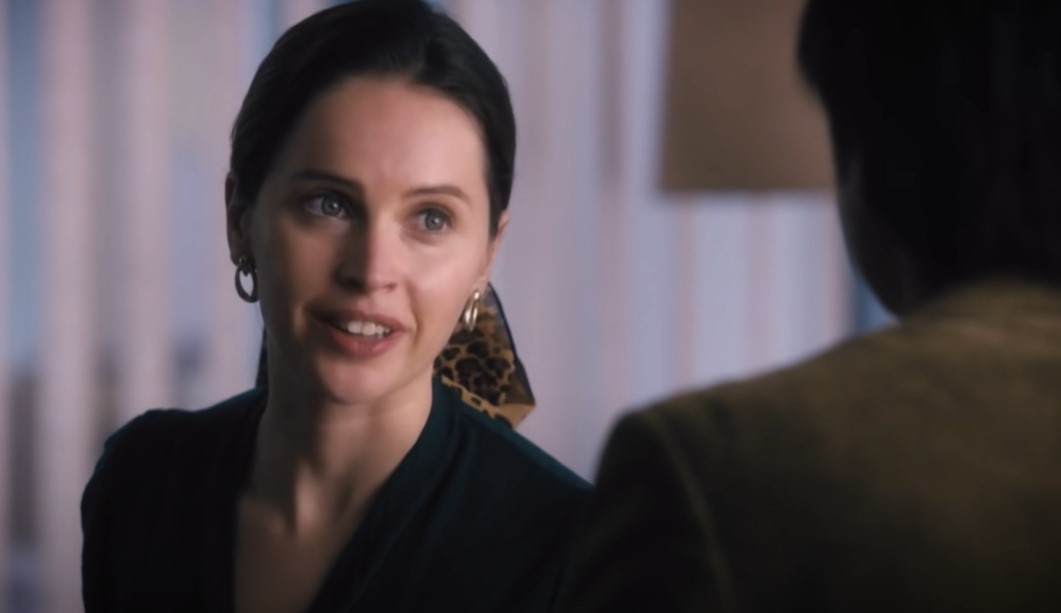 DreamWorks, On the Basis of Sex (2018)
DreamWorks, On the Basis of Sex (2018)
21. She Defended A Lot Of Men
In her days at the ACLU, a lot of Ginsburg's plaintiffs were actually men. She'd dealt with plenty of chauvinist pigs in her day, and Ginsburg knew exactly how to make change: Make the men in charge realize that discrimination affected them too. One of these cases was Weinberger v. Wiesenfeld—but this particular suit would change her life forever.
 DreamWorks, On the Basis of Sex (2018)
DreamWorks, On the Basis of Sex (2018)
22. It Wasn't Just About Business
Stephen Wiesenfeld lost his wife and suddenly found himself a single father of a young child. However, when he tried to take out survivor benefits from Social Security, he received a rude awakening: Only widows could receive survivor's benefits, not widowers. Ginsburg eventually took his case to the Supreme Court, and in the process, she and Wiesenfeld became extremely close.
She won the case, and remained friends with Wiesenfeld for the rest of her life. She helped get Wiesenfeld's son into Columbia, and even officiated his wedding. Remember: Ginsburg's life wasn't just a slog of discrimination and conflict. She helped a ton of people, and there were bright spots like this everywhere.
 DreamWorks, On the Basis of Sex (2018)
DreamWorks, On the Basis of Sex (2018)
23. She Wouldn't Settle For A Coin
It's no wonder they've made movies about Ginsburg's life: The stuff she had to put up with is almost unbelievable. Take Duren v. Missouri, a case she brought to the Supreme Court in 1979. After she made her oral argument, William Rehnquist, an Associate Justice of the Supreme Court of the United States, looked at Ginsburg and gave a truly maddening response: "You won't settle for putting Susan B. Anthony on the new dollar, then?"
God, it must have felt great for Ginsburg to finally sit in the same chair that man sat in.
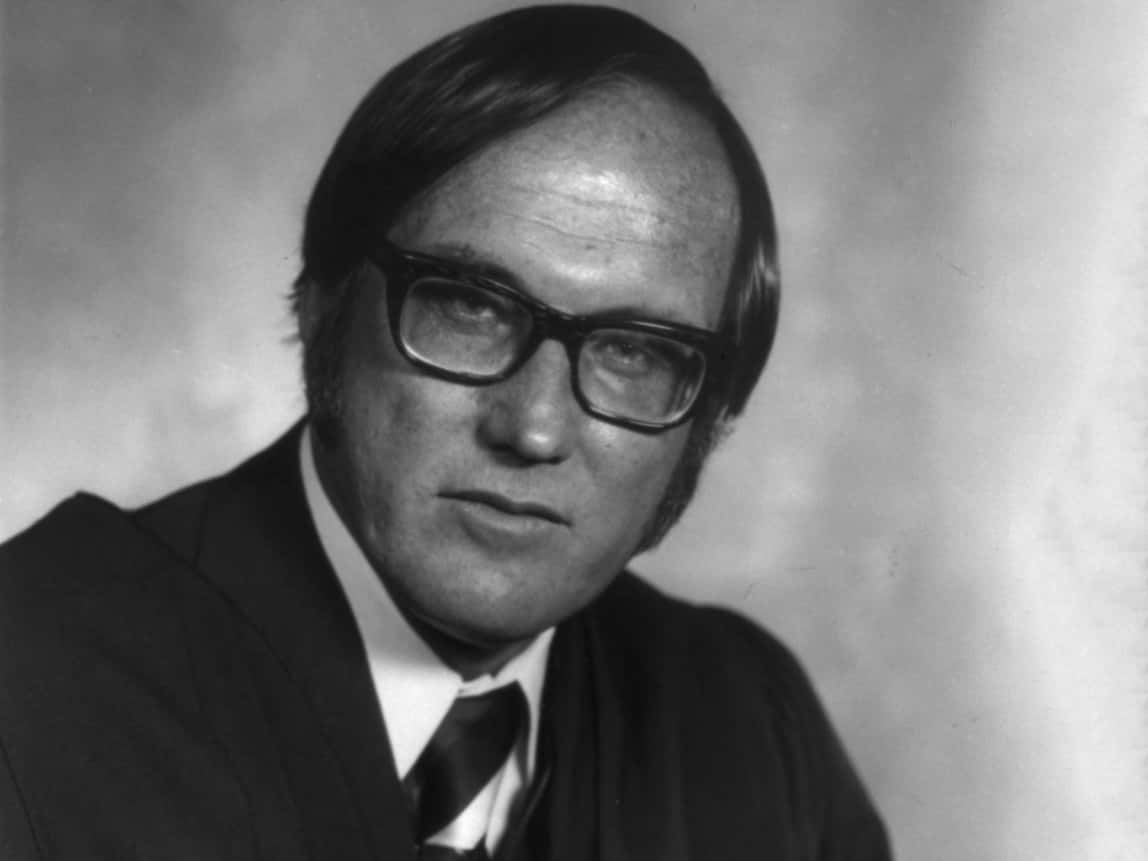 Robert S. Oakes, Wikimedia Commons
Robert S. Oakes, Wikimedia Commons
24. She Was An Obvious Choice
We all know where Ginsburg's story ends up: The little Brooklyn girl who graduated at the top of her class, who could barely find work out of law school, became an Associate Justice of the Supreme Court in 1993. And, though it's hard to imagine today, it was an extremely simple process. While her hearings before being sworn in became a little contentious, everyone realized that Ginsburg was more than qualified for the position. The Senate easily confirmed her, 96-3.
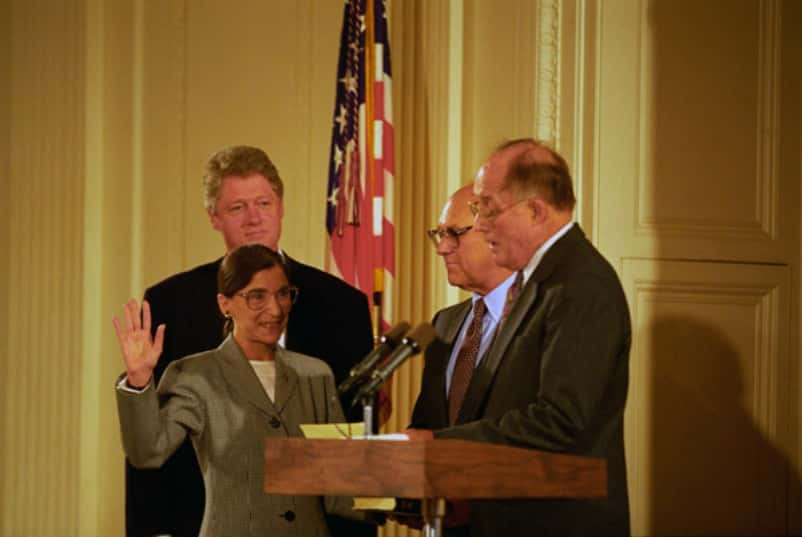 Ralph Alswang, Wikimedia Commons
Ralph Alswang, Wikimedia Commons
25. She Was A Great Dissenter
Upon her confirmation, Ginsburg joined Sandra Day O'Connor as the second woman to ever serve on the Supreme Court. In 2006, when O'Connor retired, Ginsburg suddenly felt the weight of being the Supreme Court's only woman—but rather than waver, she thrived. Most biographers say this is when she really came into her own as a Justice. When she disagreed with majority decisions, Ginsburg began to make her voice clear, passionately reading her dissent from the bench. The Notorious RBG was born.
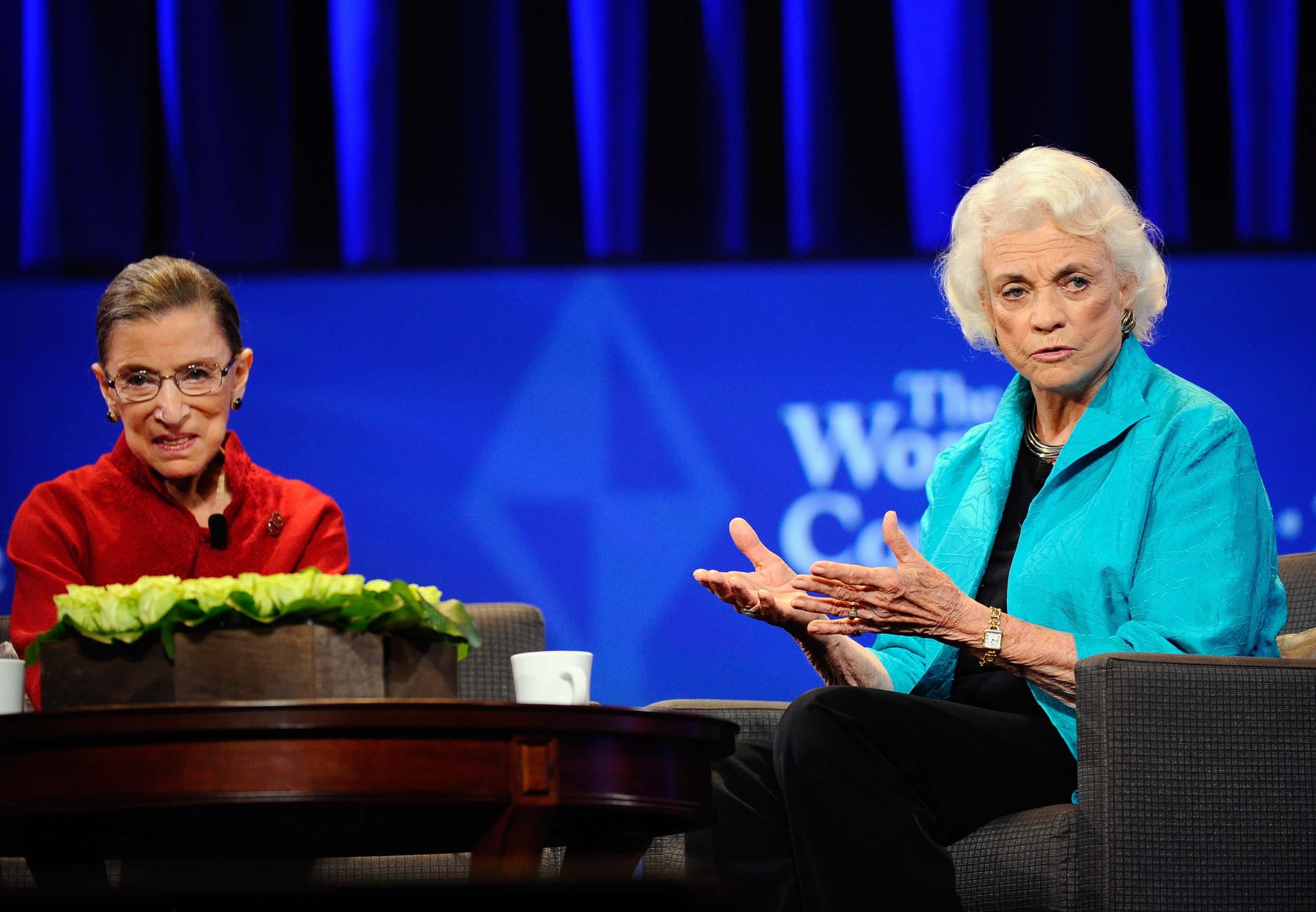 Kevork Djansezian, Getty Images
Kevork Djansezian, Getty Images
26. She Didn't Always Win
No one can win every battle, and Ginsburg knows that better than most. In 2007, Ledbetter v. Goodyear came to the Supreme Court. Goodyear had been paying Lilly Ledbetter less than her male coworkers, but she didn't find out until years later. She tried to sue, but the Supreme Court ruled that the statute of limitations had run out. Ginsburg, as you can imagine, ruled in the minority, and pointed out how women are rarely told they are being paid less.
It was a loss, to be sure, but Ginsburg made her voice heard—and this wasn't the last America would hear of Lilly Ledbetter.
27. She Inspired Change
Just a year after the Supreme Court ruled against Ledbetter, congress passed the Lilly Ledbetter Fair Pay Act, which made it easier for women like Lilly to win their pay discrimination cases. Score one for Ginsburg.
28. She Had Problems With Roe v. Wade
Ruth Bader Ginsburg was one of the most tireless voices for women's rights in American history, which will make this next fact all the more surprising: Ginsburg was actually critical of Roe v. Wade. This isn't to say that Ginsburg didn't believe in a woman's right to choose, but Roe v. Wade was contrary to her philosophy.
Ginsburg built her career on winning small victories for women's rights so that she could build a slow, steady consensus in the system. Comparatively, she believed that the sweeping Roe v. Wade was not a durable foundation for abortion rights.
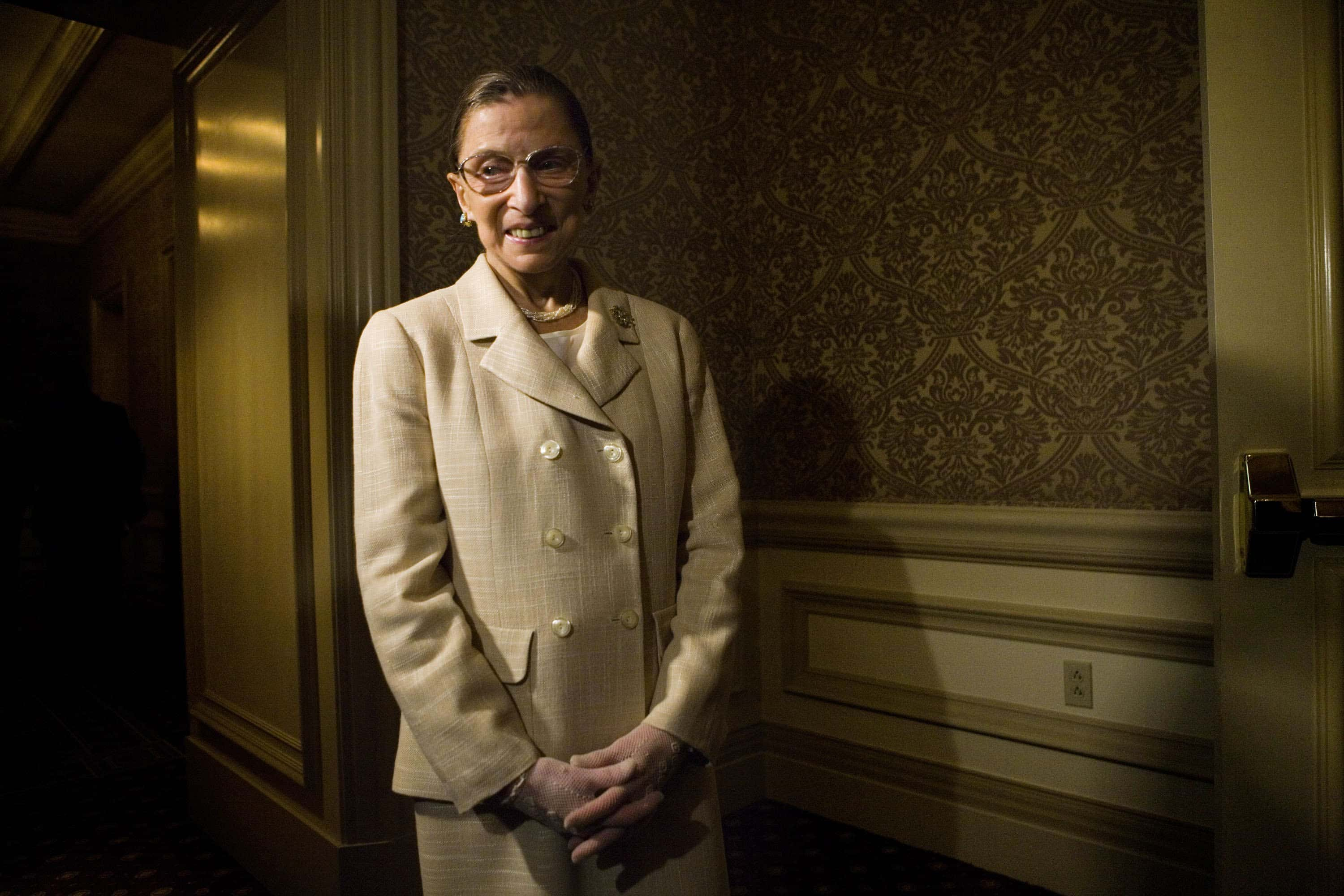 Brendan Smialowski , Getty Images
Brendan Smialowski , Getty Images
29. She Became Yet Another First
This next one should not come as a surprise: Ginsburg was the first Supreme Court Justice to officiate a same-sex wedding. On August 31, 2013, she married Michael Kaiser, the president of the Kennedy Center, and his husband John Roberts.
30. She Had A Best Frenemy
Ginsburg was half of one America's greatest odd-couples: She and conservative Justice Antonin Scalia were extremely close friends. Though they often passionately disagreed about matters of the law, when the workday was over, they went out to dinner together and bonded over their shared passion: The opera. But while she spent most of her time in the audience, Ginsburg always dreamed of being up on that stage...
31. She Was A Born Diva
“If I had any talent that God could give me, I would be a great diva.” That's right, legendary Supreme Court Justice Ruth Bader Ginsburg always dreamed of being an opera singer. However, thanks to her self-admitted monotone, she only ever sang in two places: The shower and her dreams. I wonder what her family thought as they heard the RBG's voice echoing out of the bathroom?
32. Her Kids Are No Slouches
Of course, Ginsburg's children would go on to great things themselves. Daughter Jane may have cost Ginsburg her position at the Social Security Administration all those years ago, but I'm sure she made up for it by becoming a professor at Columbia Law School. Her younger brother, James Steven Ginsburg, did pretty well for himself too, founding Cedille Records.
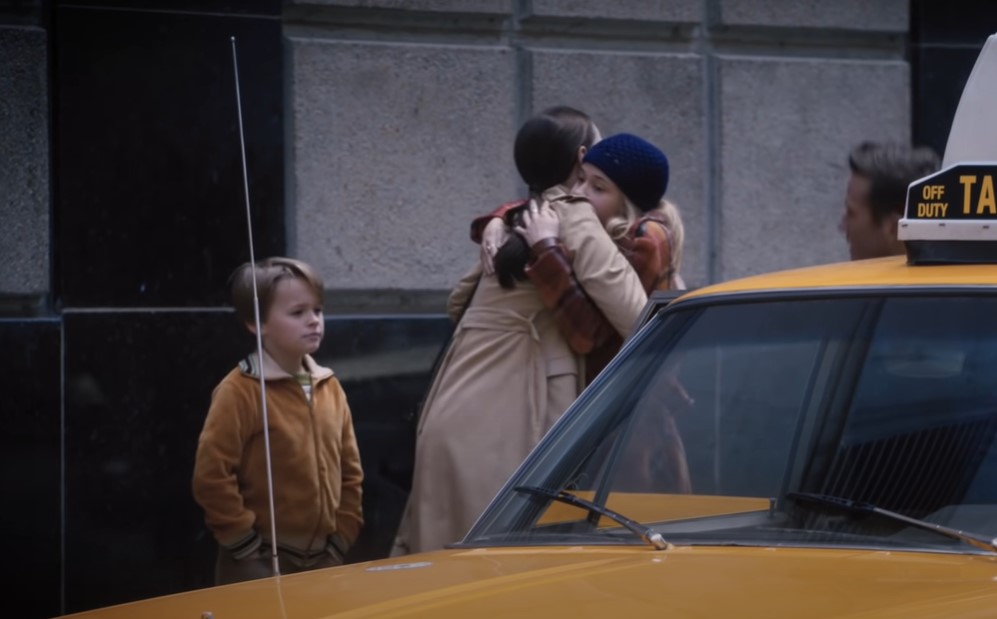 DreamWorks, On the Basis of Sex (2018)
DreamWorks, On the Basis of Sex (2018)
33. She Lost Her Husband
In 2010, Ginsburg suffered one of the greatest losses of her life: Martin Ginsburg passed from cancer, just days after their 56th wedding anniversary. His death devastated Ginsburg, but she knew her husband realized that duty had to come before all else. She went to work on the bench the next day.
34. She Was A Fashion Icon
Ginsburg and Sandra Day O'Connor were the first two female Supreme Court Justices, so they were treading in unfamiliar territory. One of the things they noticed was that a Supreme Court Justice's robes were designed to be worn with a shirt and a tie. Eventually, they decided to bring their own flair to the uniform, and they started wearing their iconic lace jabots.
But while they made the decision together, Ginsburg truly made the fashion statement her own.
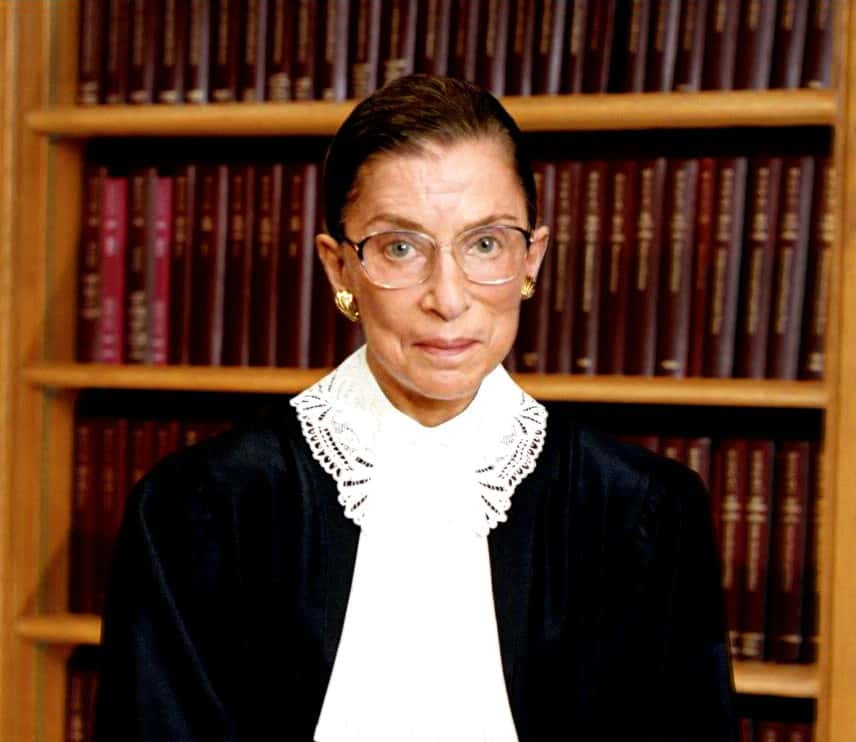 Steve Petteway, Wikimedia Commons
Steve Petteway, Wikimedia Commons
35. She Took Her Looks To The Next Level
If you were to peek in Ruth Bader Ginsburg's closet, you'd find a huge collection of gorgeous jabots from all over the world. In fact, some of them even had a special meaning. Like Tiger Woods wearing a red shirt on the final day of a tournament, Ginsburg wore a black jabot with gold embroidery when issuing dissents, and a crocheted yellow and cream jabot when issuing majority opinions.
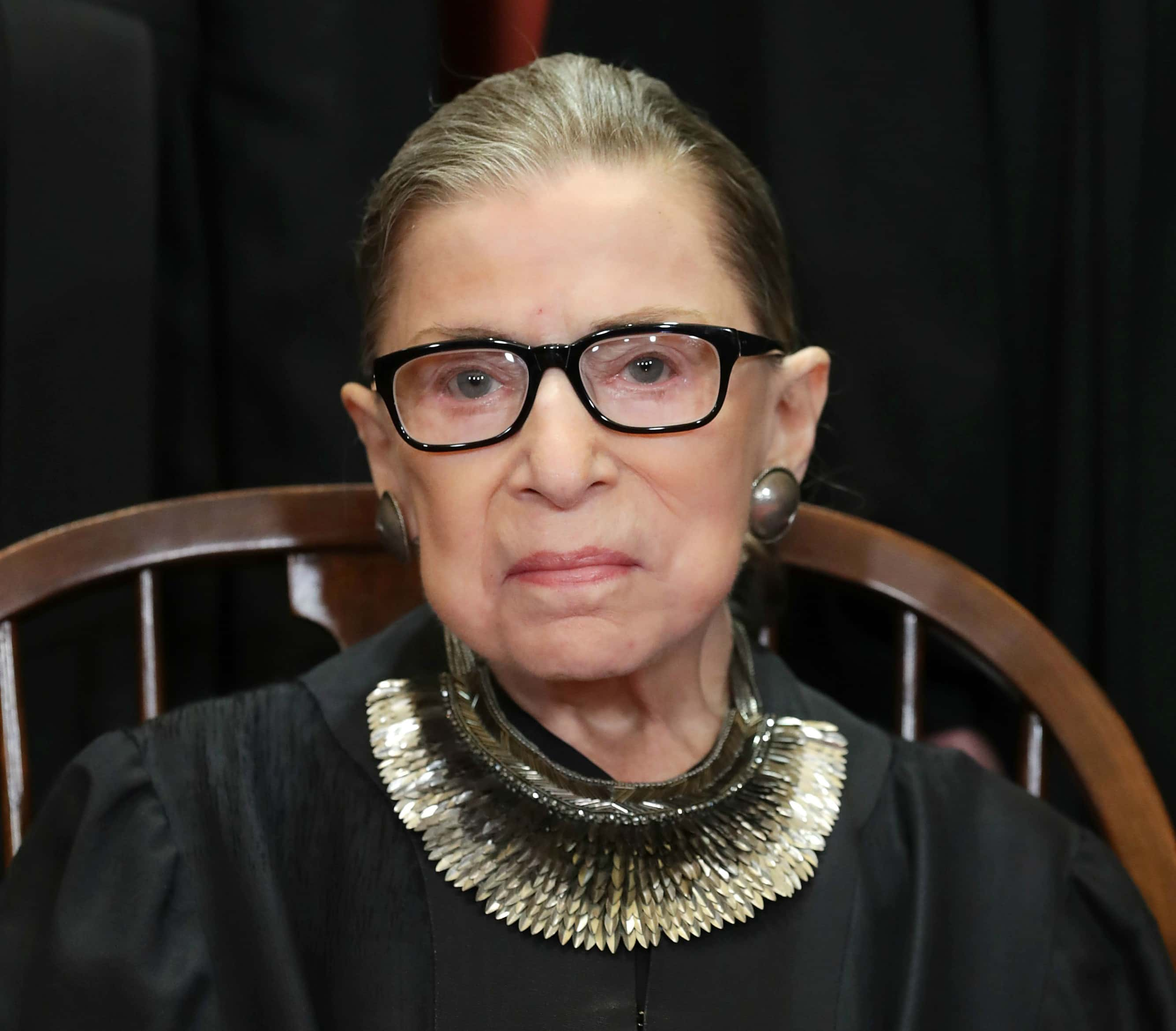 Chip Somodevilla, Getty Images
Chip Somodevilla, Getty Images
36. She Battled Cancer
Ginsburg was diagnosed with cancer herself in 1999. It was her first diagnosis, but not the last. Over the next two decades, she'd battle five bouts with the disease. Shortly after her first diagnosis, she underwent surgery, then chemotherapy, then radiation therapy. I don't need to tell you it was absolutely brutal—but I do need to tell you that Ginsburg didn't miss a single day on the bench throughout the whole nightmarish ordeal. Because of course she didn't. In fact, if anything Ginsburg came back stronger than ever.
37. She Put In The Work
Did you know that the Supreme Court has a Justices-only gym? Because it does, and that's where Ginsburg spent many hours after her cancer treatment ended. The fight left her extremely physically frail, so she started working with an ex-Special Forces trainer named Bryant Johnson. Soon enough, Ginsburg was back and—literally—stronger than ever.
38. She Was Jacked
After her first cancer treatments, Ginsburg trained so hard that she ended up in the best shape of her life. How strong was she? In a session with Johnson just before her 80th birthday, she completed 20 pushups. That's right: 80-year-old post-cancer Ruth Bader Ginsburg could do more pushups than me.
39. She Could Even Lift, Bro
Ginsburg kept on working out in the Supreme Court's gym until she passed. Did they keep track of who was strongest? Of course they did—and for years, the 5'1" Ginsburg could life more than Justices Stephen Breyer and Elena Kagan. She wanted to be her strongest if her body ever failed her again—and sadly, it did.
40. Her Cancer Returned
Not even a decade after the first time cancer reared its ugly head, Ginsburg received another diagnosis—this time with pancreatic cancer. Once again, she underwent surgery, and once again, she returned to the bench mere days after she left the hospital. Did I mention she was 73? Because she was 73.
41. She Was The Oldest Justice For A Decade
In 2010, John Paul Stevens retired from the Supreme Court, leaving Ginsburg as the oldest Justice on the bench—and she was far from being done.
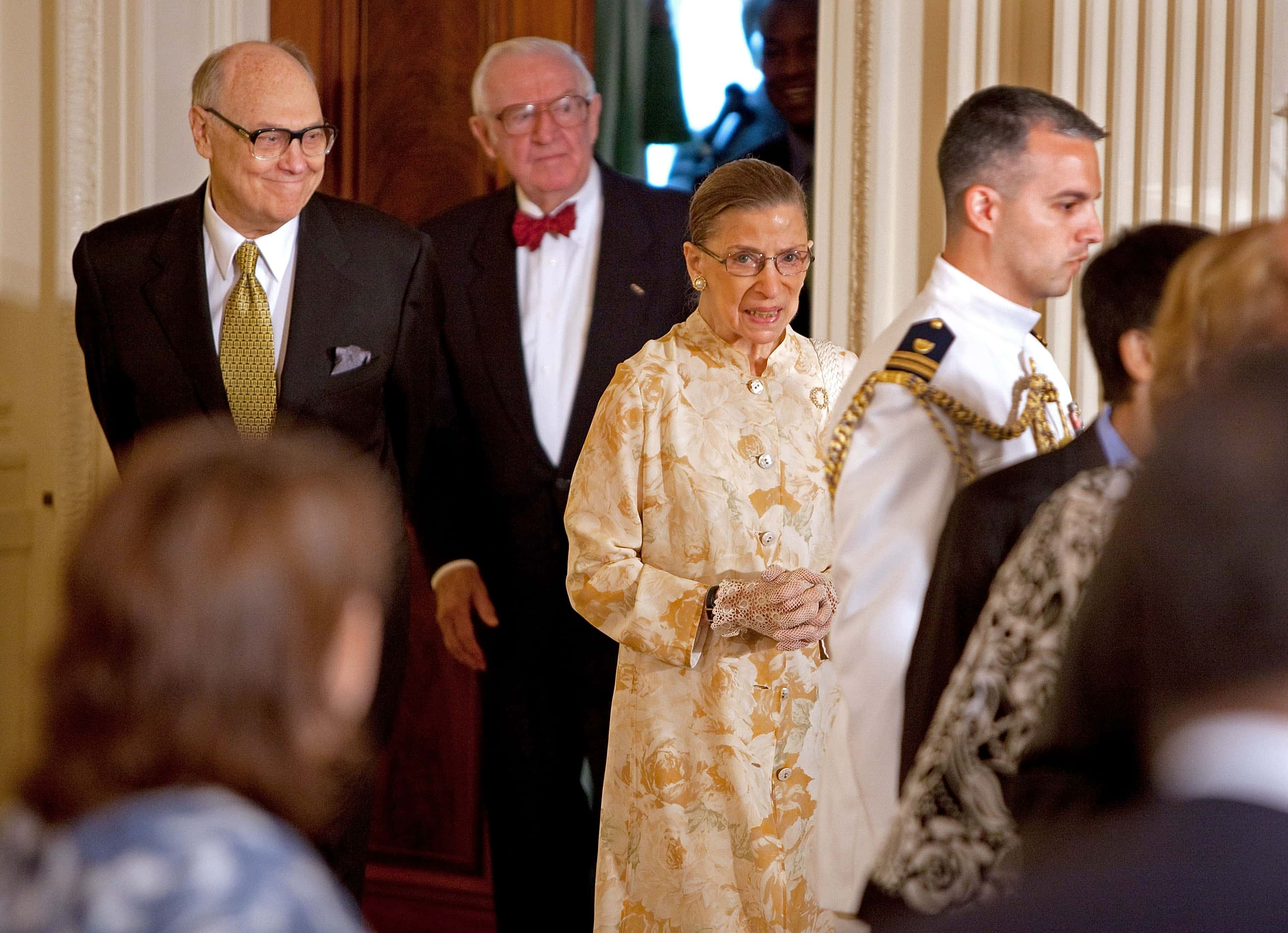 Chip Somodevilla, Getty Images
Chip Somodevilla, Getty Images
42. She Dunked On The Court
Ruth Bader Ginsburg was old, but that didn't slow her down one bit. She grew more and more outspoken, and her dissents on the bench got more and more passionate. After Shelby County v. Holder, a case that made it easier for states to restrict voting rights, Ginsburg was particularly on her game. Her fiery dissent was a fierce condemnation of the decision—and it inspired one of the final aspects of her legacy.
And of course, since it was the 2010s, it was a meme.
43. She Was A Notorious Meme
Ginsburg's now-legendary dissent led a law student to create the Notorious RBG Tumblr page. Suddenly, Ginsburg became a feminist icon for a whole new generation, and the page eventually led to a New York Times bestselling book, Notorious RBG: The Life and Times of Ruth Bader Ginsburg. Comparing little old Ruth Bader Ginsburg to Biggie Smalls was too good of an image for the internet to pass up—but the connection was a lot closer than you'd think.
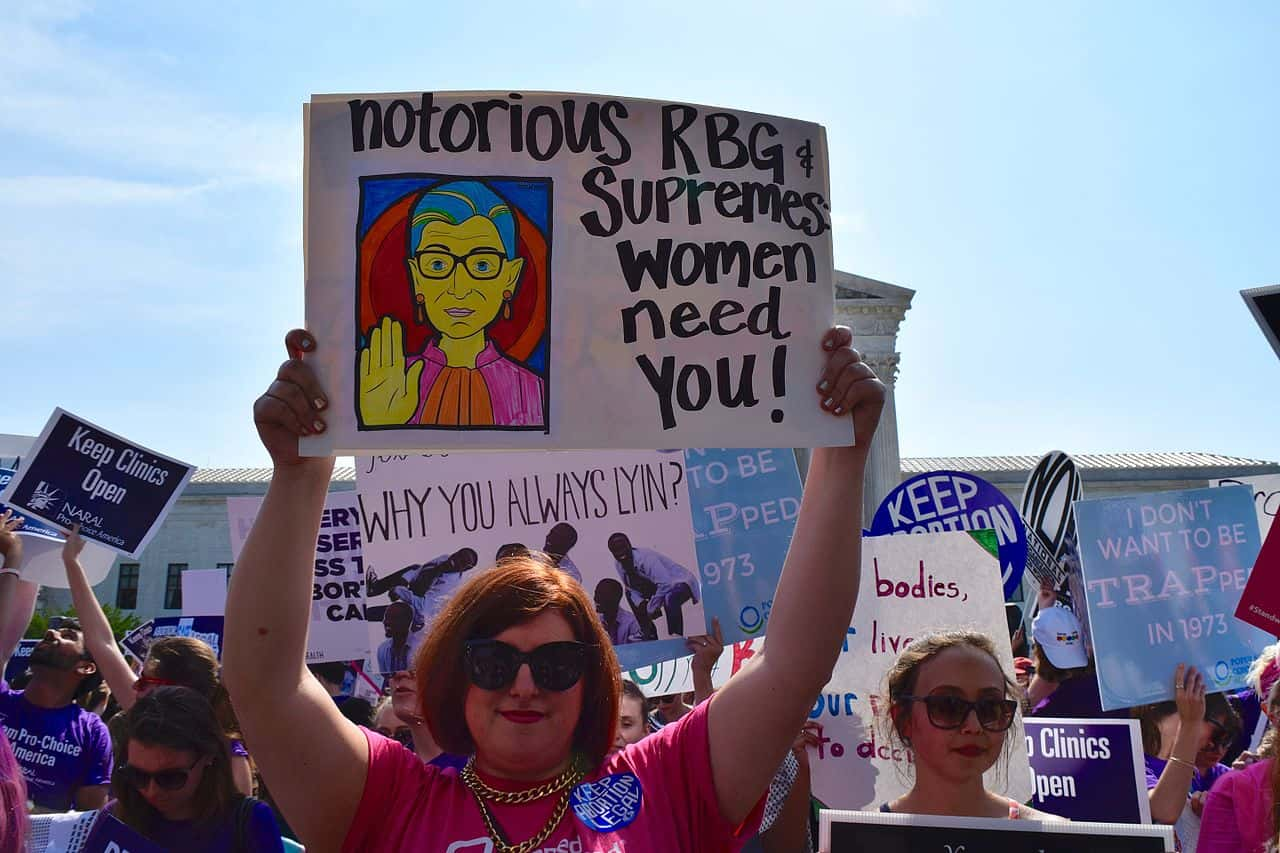 jordanuhl7, CC BY 2.0 ,Wikimedia Commons
jordanuhl7, CC BY 2.0 ,Wikimedia Commons
44. She And Biggie Weren't So Different
The Notorious BIG and RBG actually had a lot in common. They were both Brooklyn kids, born and raised, and Biggie actually burst onto the scene in 1993—the same year that RBG burst onto the Supreme Court.
45. Her Life Was Like A Movie
If you think that Ginsburg's life would make a great movie, you aren't alone. For years, the screenplay for On the Basis of Sex, a biographical movie about her, floated around Hollywood. It even made the Black List of the best-unproduced screenplays. Finally, someone came to their senses and made the film. It came out in 2018, starring Felicity Jones as RBG and Armie Hammer as Marty. And you know that Ginsburg herself made a cameo.
 DreamWorks, On the Basis of Sex (2018)
DreamWorks, On the Basis of Sex (2018)
46. She Broke Her Ribs—And Went To Work The Next Day
Are you starting to notice a pattern? After yet another cancer diagnosis/treatment, Ginsburg had to endure more hospital visits in 2018—this time for fracturing three ribs after falling in her office. Now at 85 years old, did she use the fall to finally take a day off work? Of course not! She was back to work literally the next day. Ginsburg refused to stop fighting—but the battles were starting to take their toll.
47. Cancer Would Not Leave Her Alone
Eventually, Ginsburg's body began to fail her. After she fractured her ribs, a CT scan revealed her cancer had returned—this time, in her lungs. She had to undergo a left-lung lobectomy. For the first time since she'd become a Supreme Court Justice, a quarter of a century earlier, Ginsburg had to miss an oral argument. One sick day in 25 years isn't too bad, if you ask me.
48. She Refused To Retire
Rumors that she was going to retire plagued Ginsburg for decades. After her first diagnosis, after her husband passed, as she started getting older...each time, people assumed she'd hang it up—everyone except Ginsburg herself. Time and time again, Ginsburg reiterated that as long as she could, she'd remain on the Supreme Court.
49. She Earned Some Sleep
Ginsburg's long and illustrious career eventually earned her the right to some gaffs. In 2015, during the State of the Union address, she straight-up fell asleep in the middle of the speech. Reporters were aghast, but when asked about it, the Notorious RBG simply shrugged: She'd just eaten an amazing lunch and had a couple glasses of vino. Who wouldn't be sleepy after that?
50. She Faced More Than Just Discrimination
As she started her career in the 1950s, Ruth Bader Ginsburg had to face discrimination around every corner—but unfortunately, that soon became the least of her problems. Shortly after the birth of their first child, the Ginsburgs received devastating news: Martin Ginsburg had testicular cancer. The diagnosis hit the young family hard—but they both met their battles head-on.
51. She Survived A Nightmarish Year
While Martin was fighting cancer, Ginsburg found a new gear herself. In what must have been the hardest year of her life, she cared for her newborn child and her sick husband, and she went to class, and she took diligent notes so that Martin wouldn't fall behind on his studies. Any one of those things would be enough to break most people, but Ginsburg juggled it all—and still managed to make the Harvard Law Review.
 On the Basis of Sex (2018), DreamWorks
On the Basis of Sex (2018), DreamWorks
52. She Lost Her Greatest Inspiration
For her entire life, Ginsburg cited her mother as her greatest inspiration, but tragically, Celia never got to see her daughter become a living legend. As Ginsburg entered high school, her mother continued to push her to excel. However, like so many people in Ginsburg's life, she was diagnosed with cancer around this time. She battled for several years, but eventually succumbed to the illness.
Losing a mother would devastate anyone, but the painful timing of Celia's loss hit especially hard: She passed just a day before Ginsburg's high school graduation.
53. She Was Asked An Insane Question
Ruth Bader Ginsburg enrolled at Harvard Law School in 1956, one of only nine women out of 500 men. Soon after the school year began, each of those nine women received an invite to eat dinner at the Dean's family home. That night would be burned in Ginsburg's memory for the rest of her life. After they'd finished dinner, the Dean walked around the table and asked each of the women, "Why are you at Harvard Law School, taking the place of a man?"
She'd spend the rest of her life making sure no woman ever had to answer that question again.
 John Phelan, CC BY 3.0 , Wikimedia Commons
John Phelan, CC BY 3.0 , Wikimedia Commons
54. She Finally Started Losing Her Battle
Ginsburg fought off cancer more times than you could imagine, but by 2019, she finally started losing. She received treatment in the summer of 2019, but in 2020, the disease had returned. Still, throughout it all, Ginsburg refused to retire—she'd battle as hard as she could to remain on the court just a little longer.
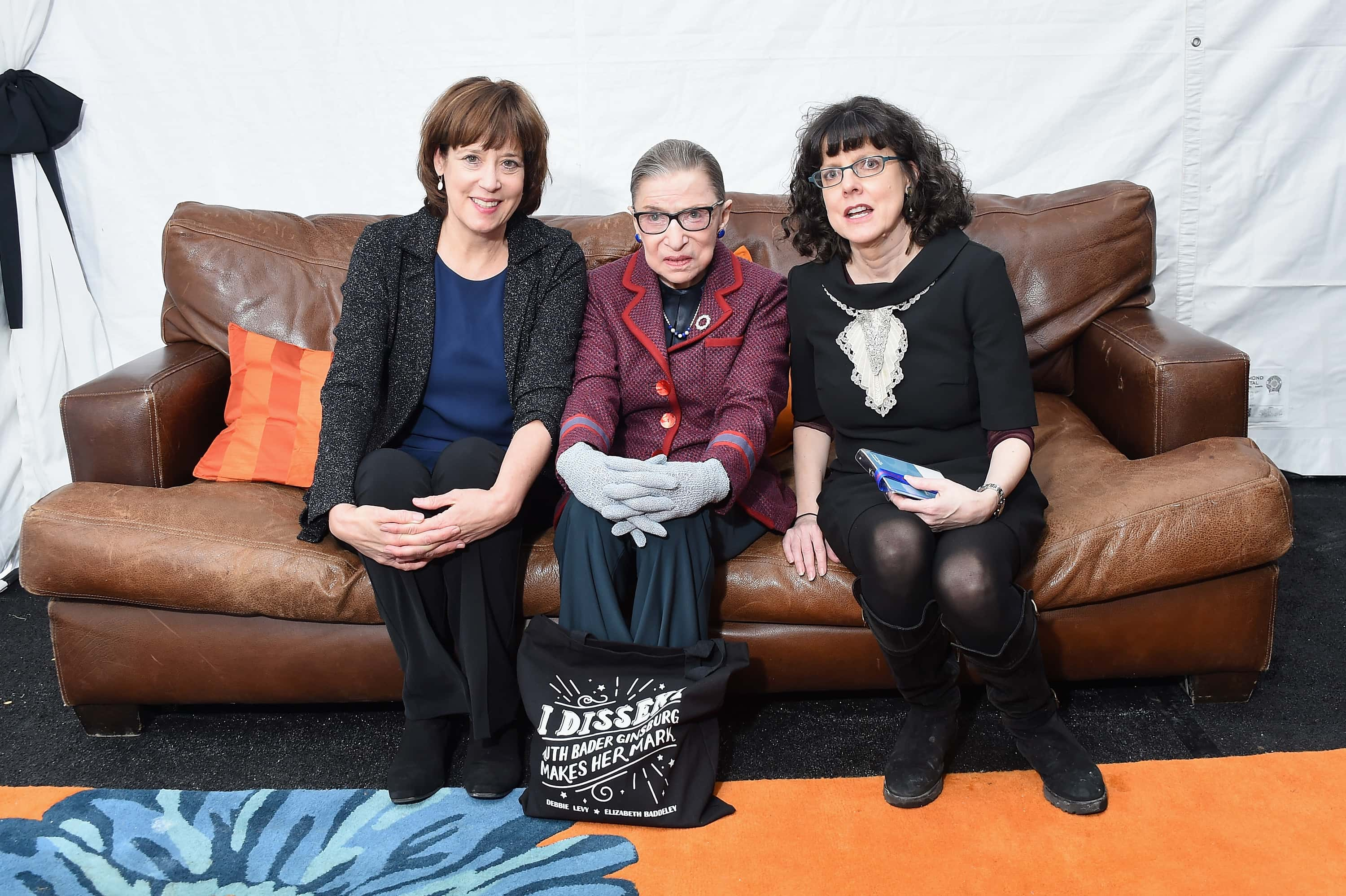 Michael Loccisano ,Getty Images
Michael Loccisano ,Getty Images
55. Gone But Never Forgotten
Ruth Bader Ginsburg finally lost the fight with cancer on September 18, 2020. With her, the world lost a legend—but her legacy will continue to inspire us forever. Rest in power, RBG.

